Awards
McAdams Awards Honorees
The History of the McAdams Award
In 1989, in its thirtieth year, the American Board of Health Physics established an annual award to honor a Certified Health Physicist who had made a significant contribution toward the advancement of professionalism in Health Physics and to the Certification process. The award was named for one of the founders of Certification Process, William A. McAdams.
William A. McAdams
Mr. McAdams’ career began as a ballistics engineer for E.I. duPont and Co. at Penns Grove, NJ in 1940. The following year he became the Senior Supervisor of Ballistics at the duPont Indiana Ordinance Works. In 1943, he became a Research Physicist in the Manhattan District at the
Metallurgical Laboratory at the University of Chicago. He then moved on to Hanford where he worked for General Electric as Manager of Radiation Protection Services under Herb Parker from 1951-55. He was promoted to a Radiation Protection Consultant at Large for the GE Corporation and relocated to GE in Schenectady, NY. He ultimately became the corporate GE manager of Industry Standards.
He was a member of the Board of Directors of what it now ANSI and active in the ISO and the International Electrotechnical Commission (he was President of the IEC from 1980 to 1983). He served for a decade (1957-67) on the NCRP.
The early actions of the HPS Board of Directors regarding the initial period are described in the HPS Member handbook. To summarize, a committee was established to study the need for certification. William McAdams served on this committee. When the committee’s recommendations were approved, the HPS appointed a temporary ABHP on November 8, 1958 and appointed William McAdams as the Chairman.
When the HPS Board of Directors formally established the ABHP through a Bylaws change, William McAdams was again appointed Chairman. The other members of the initial Board were C. Maurice Patterson, Elda Anderson, Lauriston Taylor, and John Laughlin. Mr. McAdams also was responsible for obtaining the New York State charter for the Board.
Mr. McAdams died in 1995. A short history of his career can be found here. Further, an anecdote from his daughter was published in the CHP Corner for September 2010
The committee that did the groundwork for the award in 1989 contacted a number of CHPs who had been involved in the early days of the certification process. Two individuals were repeatedly identified as playing the pivotal roles in the original Health Physics Society Certification Committee and the initial ABHP Board. Correspondence of the award committee stated “Elda Anderson was probably the driving spirit behind the whole movement. Bill McAdams apparently was the ramrod that made things happen.”
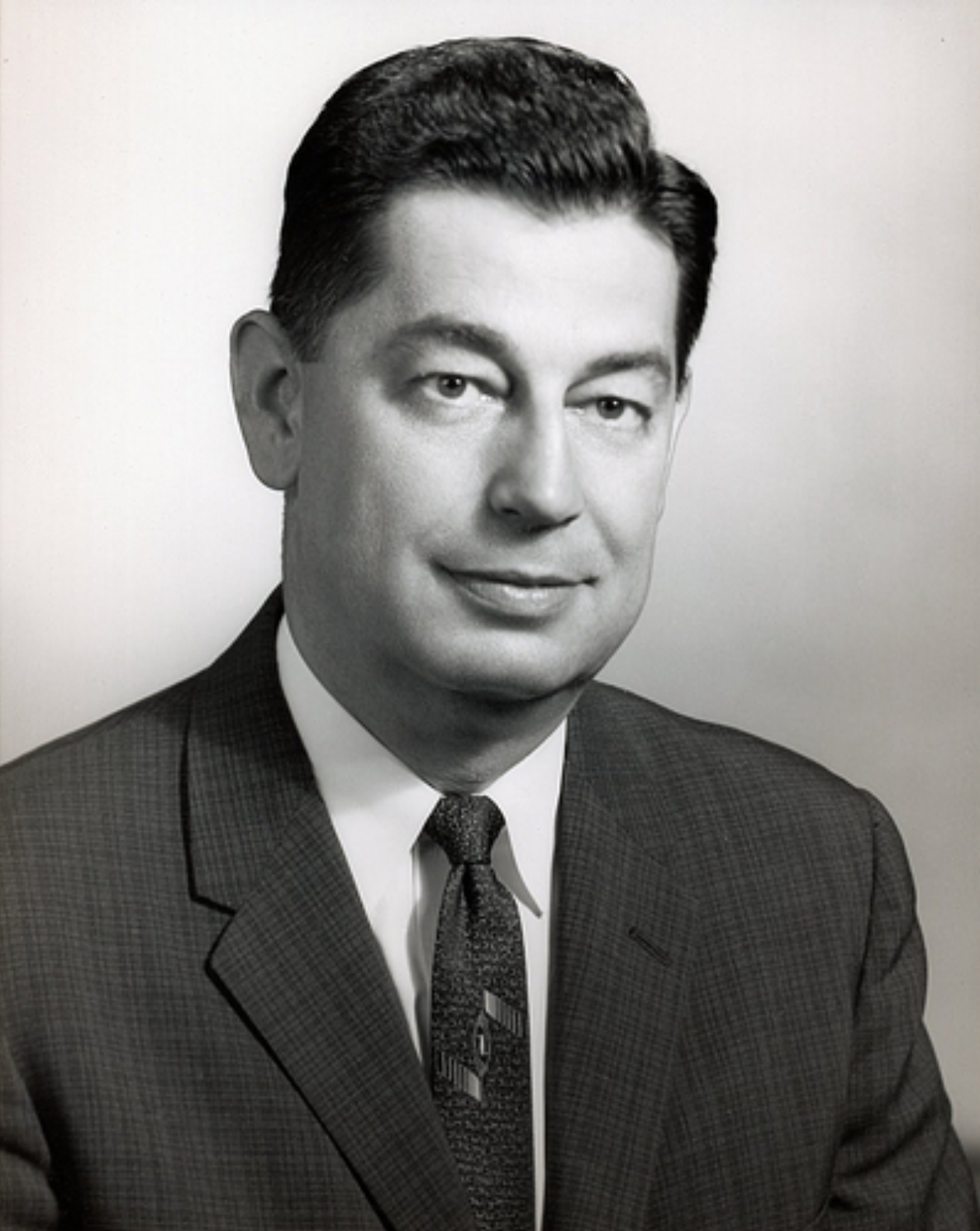
Past Award Recipients:
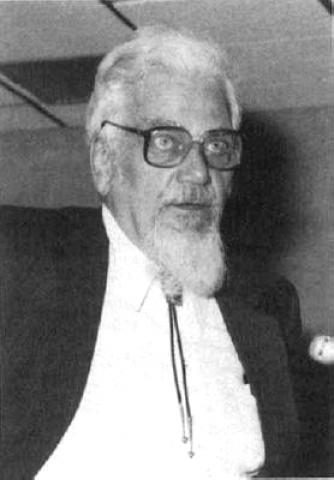
John W. Healy
Shortly after its organization, the Health Physics Society established a committee to study the need for certification of health physicists and to develop plans for certification if this appeared to be desirable. The Certification Committee membership included an energetic and farsighted young man by the name of William McAdams. After an intensive study, the Committee recommended that an American Board of Health Physics (ABHP) be established to develop standards and procedures, to examine candidates, and to issue written proof of certification to individuals who satisfied the requirements established by ABHP. The Board of Directors of the Society decided that these recommendations had merit and appointed a temporary ABHP on November 8, 1959. The Chairman of the temporary ABHP was none other than William McAdams.
The temporary ABHP developed a set of minimum requirements for certification. After carefully reviewing the professional background of 100 selected individuals believed to be representative of those recognized as competent health physicists, these names were submitted to the membership of the Society for comment. Included on that list was another mover and shaker in the certification movement by the name of John W. (Jack) Healy.
At the Annual Meeting of the Society in June 1959, these matters were discussed in an open meeting and there was general support for the plan.
The Board of Directors of the Society formally established the ABHP by approving an amendment to the By-Laws of the Society in October, 1959. William McAdams was appointed Chairman and Jack Healy became Secretary-Treasurer of the inaugural ABHP. The ABHP, under McAdams' leadership, worked diligently to become incorporated in the State of New York in December, 1960. This incorporation allowed the ABHP to achieve its independent identity. We were told that this was the first time New York had ever incorporated a certification body.
This year marks the thirtieth anniversary of the ABHP. What better time to recognize two of the pioneers who contributed so substantially to our formation and early development. Consequently I am pleased to announce the inauguration of the William McAdams Outstanding Service Award to annually recognize those individuals who have made significant contributions to the advancement of professionalism and health physics certification. This award is named for the man who exercised strong and dedicated efforts to identify the need, define the concept, organize the body, obtain the charter, and implement the initial certification program.
The second person to be honored today is the first recipient of the William McAdams Outstanding Service Award. This pioneer kept the certification program on track when Elda Anderson, the second Chairman of the ABHP, fell ill only a few months into her term of office. Jack took over the Chairmanship to finish her term and then served an additional year as Chairman. During this critical time, he also developed the Code of Ethics which constitutes the backbone of the CHP's ethical standards to this day. Jack is known to many as a witty, un-pretentious and versatile health physicist, and as the epitome of an applied Certified Health Physicist. It is most fitting that today we should recognize Jack Healy as the first recipient of the William McAdams Outstanding Service Award.
Granted June 1989
Howard Dickson, Chair Awards Committee, Vice Chairman ABHP
Frazier Bronson, Chairman ABHP
John Horan, Past President AAHP
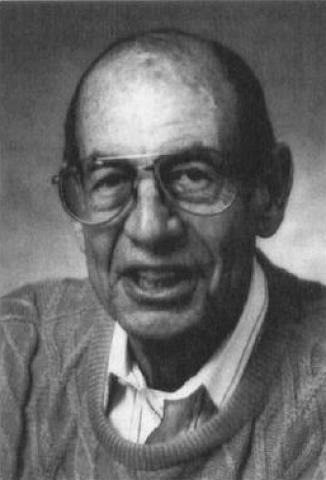
H. Wade Patterson
Shortly after its organization, the Health Physics Society established a committee to study the need for certification of health physicists and to develop plans for certification, if this appeared to be desirable. The Certification Committee membership included an energetic and farsighted young man named William McAdams. After an intensive study, the Committee recommended that an American Board of Health Physics (ABHP) be established to develop standards and procedures, to examine candidates, and to issue written proof of certification to individuals who satisfied the requirements established by the ABHP. The Board of Directors of the Society decided that these recommendations had merit and appointed a temporary ABHP on November 8, 1958. The Chairman of the temporary ABHP was none other than William McAdams.
The temporary ABHP developed a set of minimum requirements for certification. At the Annual Meeting of the Society in June 1959, these matters were discussed in an open meeting and there was general support for the plan. The Board of Directors of the Society formally established the ABHP by approving an amendment to the By-Laws of the Society in October 1959 and appointed William McAdams as Chairman. Under his leadership, the ABHP worked diligently to become incorporated in the state of New York in December 1960, allowing the ABHP to achieve its independent identity.
Last year, on the 30th anniversary of the ABHP, we recognized two of the pioneers who contributed substantially to our formation and early development; William McAdams, as the first Chairman of the ABHP, and Jack Healy, as the inaugural winner of the William McAdams Outstanding Service Award to annual recognize those individuals who have made significant contributions to the advancement of professionalism and the health physics certification. This award is named for the person who exercised strong and dedicated efforts to identify the need, define the concept, organize the body, obtain the charter, and implement the initial certification program.
This year it is our pleasure to announce the second recipient, H. Wade Patterson (emeritus CHP). Wade was involved with the certification process for more than a decade, serving as vice-chairman of the Board in 1979 and 1970 and as chairman from 1971 through 1974. Following a 2-year absence, he again became involve with the certification process as a 4-year comprehensive panel member from 1977 through 1980. It was during Wade's tenure that the Board advocated the formation of the National Registry of Radiation Protection Technologists (NRRPT) and assisted in its development. Experiences of the Board during his term also led to the abandonment of the oral exam as an option to the certification process.
In addition to his active Board and Panel involvement, Wade was chairman of the Nominating Committee in the formative stages of development of the American Academy of Health Physics. As such, he devised the method whereby each vote was counted equally. Wade has served the profession, academy, and his peers as a leader in preserving the professional ethics of certification. Therefore, it is fitting that we should recognize Wade Patterson as the second recipient of the William McAdams Outstanding Service Award.
Lee Booth, Chairman ABHP
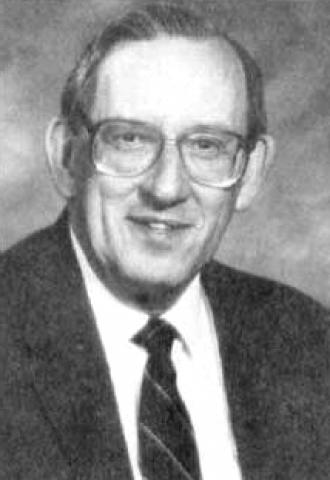
Richard R. Bowers
Shortly after its organization, the Health Physics Society established a committee to study the need for certification of health physicists and to develop plans for certification, if this appeared to be desirable. The Certification Committee membership included an energetic and farsighted young man by the name of William McAdams. After an intensive study, the Committee recommended that an American Board of Health Physics (ABHP) be established to develop standards and procedures, to examine candidates, and to issue written proof of certification to individuals who satisfied the requirements established by the ABHP. The Board of Directors of the Society decided that these recommendations had merit and appointed a temporary ABHP on November 8, 1958. The Chairman of the temporary ABHP was none other than William McAdams.
The temporary ABHP developed a set of minimum requirements for certification. At the Annual Meeting of the Society in June 1959, these matters were discussed in an open meeting and there was general support for the plan. The Board of Directors of the Society formally established the ABHP by approving an amendment to the bylaws of the Society in October 1959. William McAdams was appointed Chairman, and under his leadership, the ABHP worked diligently to become incorporated in New York State in December 1960, allowing the ABHP to achieve its independent identity.
Two years ago, on the 30th anniversary of the ABHP, we recognized two of the pioneers who contributed substantially to our formation and early development - William McAdams, as the first Chairman of the ABHP, and Jack Healy as the inaugural winner of the William McAdams Outstanding Service Award to annual recognize those individuals who have made significant contributions to the advancement of professionalism and the health physics certification. This award is named for the person who exercised strong and dedicated efforts to identify the need, define the concept, organize the body, obtain the charter, and implement the initial certification program.
Last year we recognized H. Wade Patterson, an emeritus CHP who was involved with the certification process for more than a decade. It was during Wade's tenure that the Board advocated the formation of the National Registry of Radiation Protection Technologists (NRRPT), the abandonment of the oral exam as an option to the certification process, and the development of a method whereby each voce would be counted equally.
This year it is our pleasure to announce the third recipient of the William McAdams Outstanding Service Award, Richard R. Bowers. Dick was involved with the certification process for nearly two decades, serving two terms on the Comprehensive Panel of Examiners from 1972 through 1978 and chairing that Panel in 1978; setting up and chairing the Power Reactor Specialty Panel from 1979 through 1981; serving on the ABHP from 1986 through 1990; and setting up and chairing the Part I Panel from 1988 through 1990. In all of his ABHP-related activities, Dick has been very generous with his time, and more importantly, with his ideas and wisdom. His contributions to the development and refinement of the certification process, as well as the ongoing conduct of the program, are numerous and substantial.
Dick is the type of CHP that the McAdams Award was meant to recognize. He was a key player in establishing the Power Reactor Specialty Certification, a program that has been instrumental in elevating the professionalism in the power reactor health physics community. Most recently his efforts to upgrade the Part I exam by using a computer model to help assure a consistently performing exam, and a question data base to track the performance of each question over a period of many years, have resulted in significant improvements in the quality of the Part I examination. Hence it is fitting that we should recognize Dick Bowers as the third recipient of the William McAdams Outstanding Service Award.
Leroy Booth, Chairman ABHP
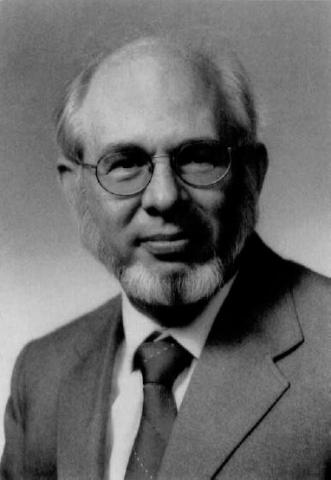
Lester A. Slaback, Jr.
Shortly after its organization, the Health Physics Society established a committee to study the need for certification of health physicists and to develop plans for certification, if this appeared to be desirable. The Certification Committee membership included an energetic and farsighted young man by the name of William A. McAdams. After an intensive study, the Committee recommended that an American Board of Health Physics (ABHP) be established to develop standards and procedures, to examine candidates, and to issue written proof of certification to individuals who satisfied the requirements established by the ABHP. The Board of Directors of the Society decided that these recommendations had merit and appointed a temporary ABHP on November 8, 1958. The Chairman of the temporary ABHP was none other than William McAdams.
The temporary ABHP developed a set of minimum requirements for certification. At the Annual Meeting of the Society in June 1959, these matters were discussed in an open meeting and there was general support for the plan. The Board of Directors of the Society formally established the ABHP by approving an amendment to the By-Laws of the Society in October 1959 and appointed William McAdams as Chairman. Under his leadership, the ABHP worked diligently to become incorporated in the state of New York in December 1960, allowing the ABHP to achieve its independent identity.
Three years ago, on the 30th anniversary of the ABHP, we recognized two of the pioneers who contributed substantially to our formation and early development - William McAdams, as the first Chairman of the ABHP, and Jack Healy, as the inaugural winner of the William A. McAdams Outstanding Service Award to annual recognize those individuals who have made significant contributions to the advancement of professionalism and the health physics certification. This award is named for the person who exercised strong and dedicated efforts to identify the need, define the concept, organize the body, obtain the charter, and implement the initial certification program.
The second recipient of the award was H. Wade Patterson, an emeritus CHP who was involved with the certification process for over a decade. Last year we recognized Richard R. Bowers for his numerous contributions to the activities of ABHP, active involvement in the certification process for nearly two decades, and the elevation of professionalism, especially in the power reactor health physics community.
This year we announce with pleasure the fourth recipient of the William A. McAdams Outstanding Service Award, Lester A. Slaback, Jr. Les has been involved in the certification process and has made many contributions to the professional advancement of the field of health physics. In the early 1970s, he helped continue the development of the Baltimore-Washington Chapter Exam Preparation Course, probably the oldest and one of the best (if not the best) of its kind. He has served as a lecturer for this and other preparational courses and was instrumental in the successful conduct of a number of topical seminars in the field of health physics. Les has worked continuously to make the Chapter's basic radiological health course successful, especially in reaching professionals in other scientific fields and policy analysts. HE was also a driving force in the formation of the Health Physics Society's Professional Enrichment Program in 1983.
Les served as Chairman of the ABHP Continuing Education Panel from 1976-1980, during the Panel's formative years. In 1982, Les was appointed to the ABHP , where he served as Vice Chair in 1983 and 1984, and as the Chair in 1985. Les was a member of the initial ABHP Part I Panel and is still serving on that group. He is also currently serving as a Director on the American Academy of Health Physics Executive Committee.
A true professional health physicist, Les has made many contributions to the field during his career. He served as a consultant to the Defense Nuclear Agency on the cleanup of Enewetak. HE was also a supervisory health physicist at the National Bureau of Standards, now National Institute of Standards and Technology (NIST), in Accelerators and Laboratory Health Physics, and is currently serving at the NIST Research Reactor. Les has served on the NCRP workgroup for Accelerator Radiation Protection and is currently a member of the Committee on Interagency Radiation Research and Policy Coordination (CIRRPC) Occupational Radiation Protection Research Subpanel.
Through the years, Les has been a steady contributor to the Certification programs, providing a veritable stream of ideas, proposals, analyses and constructive criticisms. Only one example is the recent submission of 47 sample Part I questions worthy of Panel review. He also participated in the analysis of ten years of Part II test data. In addition, Les has maintained the highest standards of professionalism, a continued enthusiasm and a clever sense of humor.
There can be but few persons within the field who have been more consistent and more productive in their devotion to advancement of the profession or more dedicated to the certification process. Hence, it is with great pride and appreciation that we recognize Les Slaback, Jr., as this year's recipient of the William McAdams Outstanding Service Award.
Ruth E. McBurney, Chair ABHP Awards Committee, Vice Chairman ABHP
Carl H. Distenfeld, Chairman ABHP
John A. Auxier, Past President AAHP
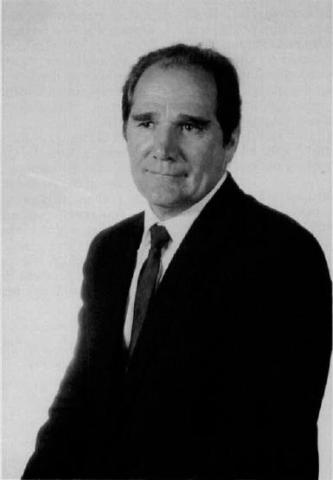
Ken Skrable
Shortly after its organization, the Health Physics Society (HPS) established a committee to study the need for certification of health physicists and to develop plans for certification, if this appeared to be desirable. The Certification Committee membership included an energetic and farsighted young man by the name of William McAdams. After an intensive study, the Committee recommended that an American Board of Health Physics (ABHP) be established to develop standards and procedures, to examine candidates, and to issue written proof of certification to individuals who satisfied the requirements established by the ABHP. The Board of Directors of the Society decided that these recommendations had merit and appointed a temporary ABHP on November 8, 1958, and named William McAdams as Chairman.
The temporary ABHP developed a set of minimum requirements for certification. At the Annual Meeting of the Society June 1959, these matters were discussed in an open meeting and there was general support for the plan. The Board of Directors of the Society formally established the ABHP by approving an amendment to the By-Laws of the Society in October 1959 and appointed William McAdams as Chairman. Under his leadership, the ABHP worked diligently to become incorporated in the state of New York in December 1960, allowing the ABHP to achieve its independent identity.
On the 30th anniversary of the ABHP four years ago, we inaugurated the William McAdams Outstanding Service Award to recognize on an annual basis those individuals who have made significant contributions to the advancement of professionalism and to health physics certification. This award is named for the person who exercised strong and dedicated efforts to identify the need, define the concept, organize the body, obtain the charter, and implement the initial certification program. That year, William McAdams was recognized as the first Chairman of the ABHP and Jack Healy was the first recipient of the McAdams Award for his substantial contributions to the formation and early development of the ABHP.
The award has been presented annually since that time to individuals who have made long-term and significant contributions to the certification process and have elevated professionalism in health physics.
This year we are pleased to announce the fifth recipient of the William McAdams Outstanding Service Award, Kenneth W. Skrable. Ken is widely recognized for his ABHP question and answer column in the HPS Newsletter, his certification preparation course, his direct involvement with and mentoring of health physics students at the University of Massachusetts-Lowell and his leadership of professional enrichment program courses at HPS meetings. His contributions to the certification process and continued professionalism in health physics have been important to those striving for certification and certified health physicists obtaining continuing education. It would be interesting to know how many certified health physicists were aided in their preparation by a Ken Skrable course or course handouts.
Ken willingly gives of his time and expertise and is consistently dedicated to improvements in the field of health physics. In addition to his involvement in initial and continuing education of health physicists, Ken has made many other contributions to the field during his career. He served as reviewer for the National Council on Radiation Protection and Measurements SC-54 committee, serviced on several ANSI committees, primarily those dealing with internal dosimetry, and has numerous publications to his credit. He is also involved in many public service activities, such as presenting Radiation and Life lectures to various organizations, conducting radon evaluation for the public, and serving on the Massachusetts Nuclear Incidents Advisory Team and the talent pool for the Committee on Interagency Radiation Research and Policy Coordination (CIRRPC).
In addition to his many visible professional involvements, Ken has quietly assisted in a behind-the-scenes role, for example, as an independent technical reviewer of the National Registry of Radiation Protection Technologists question bank.
Few persons are actively contributing to the advancement of professionalism in health physics in such a consistent and unselfish manner and on so many fronts. Therefore, it is with pride and appreciation that we recognize Kenneth W. Skrable as this year's recipient of the William McAdams Outstanding Service Award.
Ruth E. McBurney, Chair ABHP Awards Committee, Vice Chair ABHP
Carl H. Distenfeld, Chairman ABHP
Paul S. Rohwer, Past President AAHP
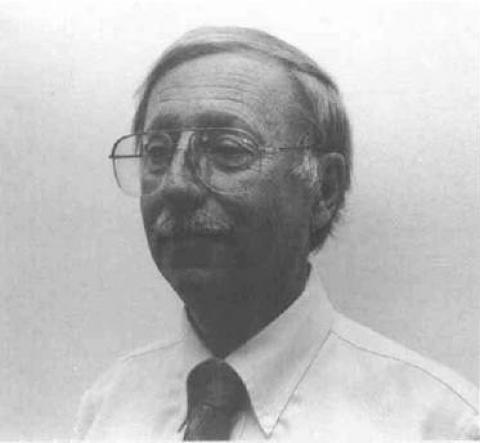
Leroy R. Booth
The William McAdams Outstanding Service Award is presented annually by the American Board of Health Physics (ABHP) to recognize and honor those individuals who have made significant contributions to the advancement of professionalism and health physics certification. This award is named for one of the "founding fathers" of the ABHP, William McAdams who, in 1958-59, exercised strong and dedicated efforts to identify the need for the ABHP, define the concept, organize the body, obtain the charter, and implement the initial certification program.
The award was first presented five years ago, on the 30th anniversary of the ABHP. The following individuals have been awarded the William McAdams Award in recognition of their contributions to certification and professionalism in health physics:
Jack Healy - 1989
H. Wade Patterson - 1990
Richard Bowers - 1991
Les Slaback - 1992
Ken Skrable - 1993
This year, we announce with pleasure the sixth recipient of the William McAdams Outstanding Service Award, Leroy F. Booth. For over 20 years now, Lee has been involved in the certification process and has made many contributions to the professional advancement of the field of health physics. From 1973 to 1975, as Director of the Baltimore-Washington Chapter Certification Exam Course, Lee helped develop the course content and direction. During the period from 1979 through 1983, Lee served on the Comprehensive Panel of Examiners where he served as Vice-Chair and Chair. IN 1984, he participated in the role delineation workshops designed to identify the CHP Domains of Practice and to ensure that the certification exam was a valid measure of health physicists' skills. Following this, Lee participated in establishment of the Part I Panel of Examiners. Lee was a director of the ABHP from 1988 through 1992, serving as the Secretary in 1989, and two years os Chairman of the Board. While on the Board and since, Lee has worked to develop a strong synergistic relationship between the Board and the Academy.
As a health physicist, Lee has made many contributions to health physics. Lee has authored numerous papers, presentations, and technical reports on various topics, including thermoluminescent dosimetry, whole body counting, microwave safety and contaminated site characterization studies. Lee served on the ANSI N343 Standards Committee from 1990 to 1993, and is Task Group Leader for the ASTM standard development committee for Performance of Field Measurements of Photon Spectra.
There can be but few persons within the field who have been more consistent and more productive in their devotion to advancement of the profession or more dedicated to the certification process. Hence, it is with great pride and appreciation that we recognize Leroy F. Booth, as this year's recipient of the William A. McAdams Outstanding Service Award.
E. Scott Medling, Chair, ABHP Awards Committee, Vice Chairman, ABHP
Ruth E. McBurney, Chairman, ABHP
Jim Turner, Past President, AAHP
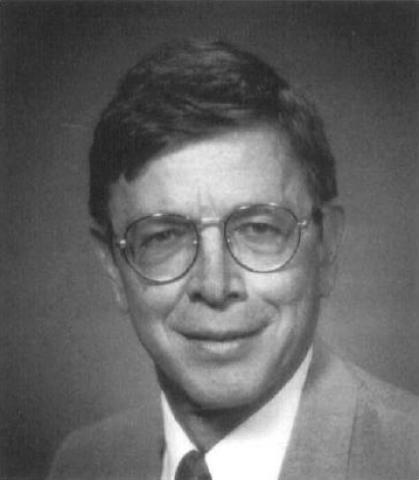
William R. Casey
The William McAdams Outstanding Service Award is presented each year by the American Board of Health Physics to recognize those individuals who have made important contributions to advancing the profession of health physics by encouraging its study through the certification process. The Award was established in 1989 in honor of one of the Board's founders, William McAdams. William McAdams provided leadership, energy, and vision to the Board during its formation. He was a member of the 1958 Certification Committee formed by the Health Physics Society to investigate the need for a Board. He then served as the Chair of the temporary ABHP formed in November, 1948, and as the first Chair of the inaugural board when it was formed in October, 1959. Today's recipient, and past recipients of the Award, have made similar noteworthy and significant contributions to the advancement of our profession and the certification process.
The Award was first presented in 1989 on the 30th anniversary of the ABHP. The six health physicists who have received the William McAdams Award are Jack Healy, 1989; H. Wade Patterson, 1990; Richard Bowers, 1991; Les Slaback, 1992; Ken Skrable, 1993, and Lee Booth, 1994.
Today I am very pleased to announce that William R. Casey is the recipient of the seventh William McAdams Outstanding Service Award. In making this award, the Board recognizes Bob Casey for this continuing and dedicated efforts in advancing the profession of health physics through certification. Bob's contributions to the certification process have a close parallel to those of William McAdams, as Bob provided dedicated and visionary leadership in another important formative period which led to the establishment of the American Academy of Health Physics.
Bob became a certified health physicist in 1974. He became active in the certification process shortly afterwards, joining the Comprehensive Panel of Examiners in 1976, and becoming Chair of that Panel in 1981. After completing his tenure with the Panel, he became a member of the Board, and served on the Board from 1982-1986. He was Chairman of the Board in 1986, having served as Vice Chair in 1985 and as the Board's first Parliamentarian in 1984. He was a member of the Board during a very significant time in its history, when the American Academy of Health Physics was being formed and when the roles and responsibilities of the two organizations were being defined. Bob was Chair of the Steering Committee for the formation of the AAHP in 1985 and 1986.
Bob continues to be very active in the certification process. He became President-Elect of the American Academy of Health Physics in 1993, served as President in 1994, and is currently Past President of the Academy. As President of the Academy, he was very instrumental in the successful final merging of the ABHP and AAHP.
Bob's accomplishments in other areas of health physics are equally impressive. He is currently the director of the environment, safety and health division at Brookhaven National Laboratory. He has served on several NCRP committees, ANSI Working Groups, and DOE, NRC, and EPA advisory panels. His professional interests include operational health physics, especially accelerator health physics and emergency planning. Bob was a member of the Working Group which wrote the "Health Physics Manual of Good Practices for Accelerator Facilities," and was a member of the DOE Advisory Panel on Accelerator Radiation Safety. He has been a lecturer for a short course at Harvard University on planning for Nuclear Emergencies.
Bob is a leader in his professionalism and dedication to health physics and its practice. In appreciation and recognition of Bob's many signification contributions to the certification process and to the advancement of our profession, we take great pride in presenting him today with the William McAdams Outstanding Service Award.
Tom Buhl, Vice Chair ABHP
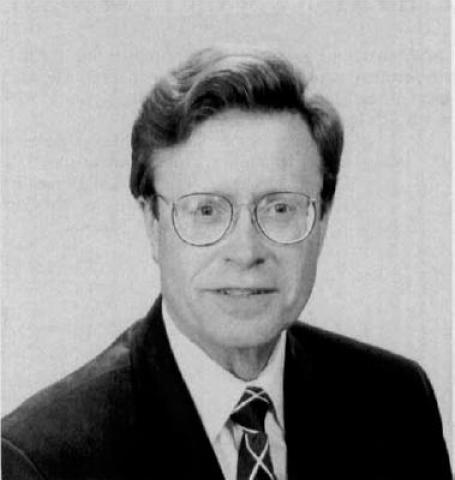
Frazier L. Bronson
The William A. McAdams Outstanding Service Award is presented each year by the American Board of Health Physics. Our purpose is to recognize those individuals who have made significant contributions to the advancement of professionalism and health physics certification. This award is named for the man who exercised strong and dedicated efforts to identify the need, define the concept, organize the body, obtain the charter, and implement the initial certification program.
The Award was established in 1989 in honor of one of the Board's founders, William McAdams. William McAdams provided leadership, energy, and vision to the Board during its formation. He was a member of the 1958 Certification Committee formed by the Health Physics society to investigate the need for a Board. He then served as the Chair of the inaugural Board when it was formed in October 1959. Today's recipient, as have past recipients of the Award has made similar noteworthy and significant contributions to the advancement of our profession and health physics certification.
The award was first presented in 1989 on the 30th anniversary of the ABHP. The seven previous recipients of the William McAdams Outstanding Service Award are:
Jack Healy - 1989
H. Wade Patterson - 1990
Richard Bowers - 1991
Les Slaback - 1992
Ken Skrable - 1993
Lee Booth - 1994
Bob Casey - 1995
Today, I am very pleased to announce that Frazier L. Bronson is the recipient of the eighth William A. McAdams Outstanding Service Award. In making this award, the Board recognizes Frazier Bronson for his continuing and dedicated efforts in advancing the profession of health physics through certification. Frazier's contributions to health physics certification include leadership through the period when a number of refinements to the process of developing the certification examination were proposed and implemented.
Frazier received his certification in health physics in 1973. Prior to becoming certified, he participated as an instructor in instrumentation for the Baltimore-Washington Chapter's ABHP Certification Exam Preparation course from 1968 to 1974. He also co-developed, co-directed, and taught a portion of the Delaware Valley Chapter's 20-week ABHP Certification Exam Preparation Course in 1973 and 1974. Frazier served on the original panel of the Continuing Education committee from 1977 to 1979; he also participated in the first ABHPO Role Delineation process. From 1985 to 1989, Frazier served as a Board Member of the ABHP, including two years as Secretary-Treasurer (1986-1987) and two years as Chair (1988-1989).
During Frazier's tenure on the board several important processes were developed and initiated to improve the quality and consistency of the certification exam. The following list contains many of these improvements:
- Implemented the results of the Role Delineation as a basis for the subject matter of exam questions.
- Increased the reliability of the examination process by subjecting potential questions to a formal review process and rating system.
- Provided for multiple graders (first 3 ,and then 5) for each question.
- Eliminated the oral examination option.
- Developed uniform scoring guidance for graders.
- Provided training session for Comprehensive and Power Reactor Panel members for better question development.
- Implemented the ABHP Policy and Procedures Manual for Board and Panel operations.
- Introduced a formal appeals process.
- Created the Part I Panel as a separate entity.
- Created the William McAdams Outstanding Service Award.
- Introduced the first ABHP/AAHP topical session at the HPS annual meeting.
- Participated in the formative years of the AAHP, especially as it related to the ABHP.
Frazier's closing comment on his ABHP tenure is indicative of his outlook, "Had a great time and worked with some really neat people."
Frazier has also compiled an impressive collection of accomplishments in job-related activities. He is currently Vice President, Applied Systems Development, Marketing Department at Canberra Nuclear. In this capacity he is responsible for technical development and marketing of applied spectroscopy products. Included are in-vivo counting hardware and software, low-level waste assay systems, in-situ gamma spectroscopy environmental assay units, dosimetry calculation software, mobile laboratories, and a wide variety of other products for specialized customer applications.
He has also served as HPS Representative to the ANSI N13 Full Committee (Radiation Protection) from 1967 to 1993. He has been a member of the ANSI N13.30 Working Group (Performance Criteria for Radiobioassay) from 1984 to the present time.
If you need to know anything about past operation of the ABHP, please consult the hallmark paper by Frazier, "The American Board of Health Physics: The First 35 Years," Health Physics 67:454-470, 1994.
Frazier exemplifies the professional ism and dedication to health physics and its practice. In appreciation and recognition of Frazier's many signification contributions to health physics certification and to the advancement of our profession, we take great pride in presenting the William McAdams Outstanding Service Award to him today.
Roger C. Brown, Chair ABHP Awards Committee, 1996 Vice Chair, ABHP
Thomas E. Buhl, 1996 Chair, ABHP
Carol D. Berger, 1996 Past President, AAHP
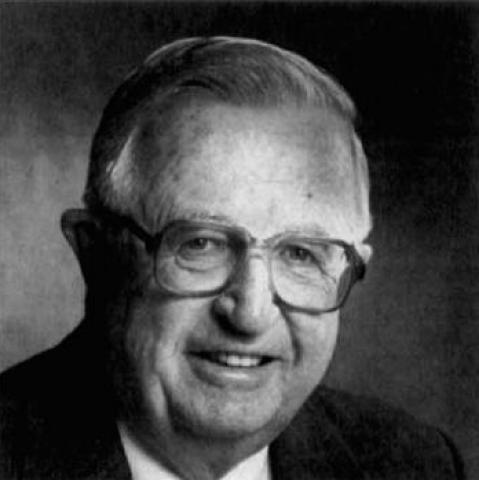
Robert Martin Ryan
The American Board of Health Physics is pleased to honor Robert Martin Ryan, CHP, as the 1997 recipient of the William A. McAdams Outstanding Service Award. This award is given annually to a Certified Health Physicist who has made significant contribution toward the advancement of professionalism in health physics and to the certification program of the American Board of Health Physics.
Following graduation from Rensselaer Polytechnic Institute in 1957, Bob began his career in health physics with a Fellowship from the U.S. Atomic Energy Commission to study at the University of Rochester and Brookhaven National Laboratory. After this initial training, Bob joined the Naval Reactors program at the Bethlehem Steel Company in Quincy, Massachusetts, as a health physics engineer. There he worked on the design and construction of USS Long Beach and USS Bainbridge.
In 1960, Bob joined Alco Products in Schnectady where he participated in the development of the SM-1, SM-lA, and PM-2A military reactors. His duties as health physics engineer there included a seven-month assignment at Camp Century in Greenland for startup testing of the PM-2A reactor.
In 1962, as a member of the Commissioned Corps of the U.S. Public Health Service, Bob participated in Operation Domenic at Christmas Island. During this operation, he participated in environmental sampling of weapons debris and laboratory analysis of environmental samples. He attained the rank of Commander. Later that year, he joined Rensselaer Polytechnic Institute as Director of the Office of Radiation and Nuclear Safety and Adjunct Associate Professor in the Department of Nuclear Engineering. There he was responsible for a health physics program that included a 100 MeV linear accelerator, critical reactor facility, x-ray diffraction and fluorescence laboratories and numerous radioactive materials laboratories. In addition, Bob serves or has served on the radiation safety committees of three teaching and research hospitals in the Albany, New York, area, the General Electric Corporate Research and Development Center, and with NES, Inc.
During his 32 years in academia, Bob developed several courses in radiological engineering, medical health physics, and the environmental impact of nuclear power plant operations. He has introduced over 1000 students to the basic principles of health physics and has inspired many to pursue the field in greater depth. He has advised dozens of students in research leading to Masters and Doctoral degrees at Rensselaer. Bob has conducted courses to train physicians in the physics of radiology, the media in the technology of nuclear power, and numerous researchers in the safe use of radioactive material.
Bob's research interests include personnel dosimetry and the environmental impact of nuclear power plants. He has performed numerous measurements of neutron spectra at pressurized and boiling water reactors in addition to turbine skyshine measurements at a boiling water reactor. He worked closely with health physicists in industry to identify meaningful research projects for his students. Some of these research projects directly led to employment opportunities for his students.
Throughout his career Bob has recognized and emphasized the importance of professional development and certification. He became a diplomat of the American Board of Health Physics in 1968 and has maintained certification for the past 29 years. In the early 1980's Bob worked closely with Dick Bowers and Joe Sayeg on the ad hoc committee to develop the current Part I examination bank. After this, Bob served two terms on the Part II Comprehensive Panel of Examiners. In 1984 he organized a review course to prepare power reactor health physicists in central New York for the certification examination resulting in seven successful candidates.
His public service includes many valuable contributions to public education, particularly in the areas of emergency preparedness for nuclear power plants and radioactive waste disposal. Bob has served on several advisory panels to New York State agencies. During the January 1982 Site Area Emergency at the Ginna Plant in Rochester, New York, Bob provided calm factual commentary to the local news media. This commentary greatly helped public understanding and eased concern about the event. With the passage of the Low Level Waste Policy Act, Bob became active in efforts to site a low-level waste disposal facility in New York State. Through numerous public hearings and meetings he continued to provide a balanced perspective on radiation risks and the beneficial uses of radioactive material.
Bob became a plenary member of the Health Physics Society in 1959. He served on a number of committees including the Academic Education Committee. He is a charter member of the Northeastern New York Chapter and served as Secretary, President-Elect and President. He served as the program chair for the 1976 Mid-Year Meeting and as a member of the program committee for the 1994 Mid-Year Meeting. In 1991, Bob was inducted into the Fellow class in recognition of his contributions to the Health Physics Society and the health physics profession. Today, we recognize these same contributions and accomplishments with the William A. McAdams Outstanding Service Award.
George J. Vargo, Vice Chair ABHP
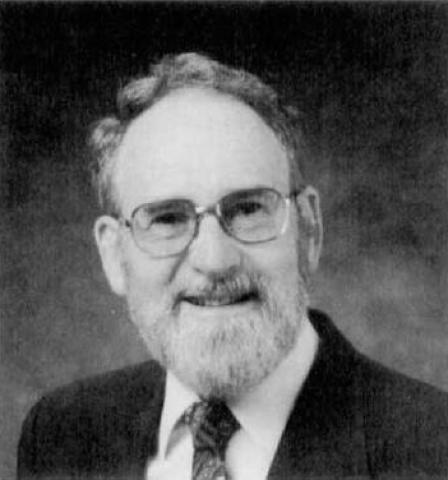
Dale H. Denham
The American Board of Health Physics is proud to present the William A. McAdams Outstanding Service Award to Dale H. Denham. This award is given annually to a certified health physicist who has made significant contributions towards the advancement of professionalism in health physics and to the health physics certification process. The strength of the certification process relies on the professional strengths of the people who serve on the Board and Panels and on the clarity and consistency of its documentation. Dale has made significant contributions in each of these key areas.
Regarding documentation, we, as health physicists, have come to understand that in the eyes of the regulator, we are only as good as the records we keep. Dale applied this principle to the American Board of Health Physics, as he was the person who formatted and compiled the various memos, motions, minutes, and mechanics of the Panels of Examiners into the Board's Examination Panel Procedures Manual in 1985. This document implements the Board's Policy Manual and delineates how the examination is to be constructed to reflect the specifications of the professional practice of health physics. Dale also implemented the Board's direction and coordinated the development of the first serial multiple choice questions appearing on Part II of the comprehensive examination. Dale's legacy has recently paid dividends in that the Board's Procedures Manual was a key element in the recent application for accreditation of the professional certification in health physics by the Council of Engineering Scientific and Specialty Boards.
Dale actually began his service to the certification process in 1983, when he was appointed to the Comprehensive Panel of Examiners. That was during the time when there was also a Power Reactor Panel of Examiners, and the Part I examination was in the capable hands of Richard Bowers, 1991 recipient of the McAdams Award. Dale served as Vice-chairman in 1985 and as Chairman of the Comprehensive Panel of Examiners in 1986. Prior to Dale's tenure as Chair of the Comprehensive Panel of Examiners, each question on the Part II examinations was graded by only one person. Under Dale's gentle leadership, the Board recognized the inherent difficulty in assuring fairness with only one grader. In 1985, he helped coordinate the first multiple grading of Part II examinations, using a group of peers to review each candidate's response to each Part II examination question. Following Dale's lead, the concept of multiple graders for each question became a Board policy and grew from his original three to five, and now we are back to having three graders for each non-multiple choice question. Dale's legacy lives on.
Having "graduated" from the Panel of Examiners, he also served on the American Board of Health Physics during some of the formative years of the Academy, serving well as a member (1987) and in the offices of Parliamentarian (1988-1989) and Vice-Chairman (1990-1991). Dale has also served on Part I question development and validation panels. In more recent years, Dale has shared his wealth of professional experience, training, and knowledge of the examination process with others seeking certification in the practice of health physics. He has served as an instructor for examination preparation refresher courses offered by the Columbia Chapter of the Health Physics Society and for those courses offered by the Washington State University-Tri-Cities campus. From 1995 through 1996, he coordinated the examination preparation refresher courses for Washington State University-Tri-Cities.
Dale has a wealth of experience and training that he gladly and willingly shares with those seeking self-improvement. He started his career in health physics ably armed with a double major in mathematics and physics from Willamette University in Salem, Oregon, in 1960. He then went north as an AEC Health Physics Fellow at the University of Washington and Hanford Atomic Products Operation, receiving his M.S. degree in Radiological Sciences as part of the first class of such graduates from the University of Washington in 1962. Dale then proceeded south to Lawrence Radiation Laboratory (now Lawrence Livermore National Laboratory) where he provided health physics support for tritium, plutonium, and TRU facilities. It was at Lawrence Radiation Laboratory that he met his first office partner, Ron Kathren (current President of the American Academy of Health Physics and former President of the Health Physics Society).
Seeking to be back in the northwest, Dale moved north once more, this time joining Battelle's Pacific Northwest Laboratory, where he gained valuable experience in environmental monitoring and reporting. Dale then moved east to Radiation Management Corporation where he applied his environmental experience to managing the environmental monitoring programs for several nuclear power plants.
Yet, Dale's roots were in the west. So he came back to Lawrence Radiation Laboratory as Supervisor of Radiological Assessments and eventually back to Hanford where he again worked for Battelle adding the broad areas of risk assessment, emergency response, and operational health physics to his growing list of capabilities.
He is now Manager of Radiological Measurements and Environmental Support for Bechtel Hanford, Inc., where he has developed the company's Price Anderson Amendments Act procedure for evaluating potential radiological noncompliances, as well as a simplified procedure for reporting radiological occurrences.
Dale's accomplishments are many and varied. The American Board of Health Physics certified him in the comprehensive practice of health physics in 1969. In addition to his contributions to the American Board of Health Physics and American Academy of Health Physics, he has written more than a dozen articles published in Health Physics and has contributed to over 75 technical reports on topics related to health physics. He has also made oral presentations at more than 50 national or international meetings. His professional contributions also include participation on the ANSI Standards Committee that formalized the Fissile Material symbol, development of the first Battelle Criticality Safety Manual, and participation on ASTM and NCRP subcommittees developing decommissioning guidance.
In 1990, he was named a Fellow of the Health Physics Society. More recently, in 1997, he received the Herbert M. Parker Award presented annually by the Columbia Chapter of the Health Physics Society. That award "recognizes individuals who have made accomplishments of fundamental importance to the practice, acceptance and advancement of the health physics profession or have performed exceptional service to the Health Physics Society." That award is named for Herb Parker, whose pioneering spirit led the development of Hanford's first radiation protection program.
Today's award is named for William A. McAdams, whose leadership, energy, and vision helped make Certification by the American Board of Health Physics possible. Today Certification by the American Board of Health Physics is one of the more respected professional certifications presently available. By his hard work, energy, and stamina, Dale H. Denham has carried out the vision of Bill McAdams and significantly contributed to the advancement of professionalism and the certification process. Congratulations Dale!
Nancy P. Kirner, Vice Chair ABHP
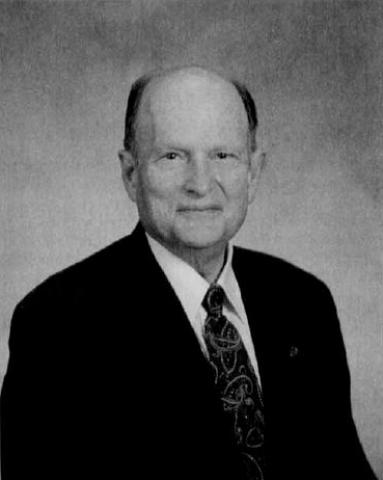
Bryce L. Rich
The American Board of Health Physics is proud to present the William A. McAdams Outstanding Service Award to Bryce L. Rich. This award is given annually to a certified health physicist who has made significant contributions toward the advancement of professionalism in health physics and to the health physics certification process. The strength of the certification process relies on the professional strengths and leadership of the people who serve on the Academy, Board, and Panels. Bryce has made significant contributions in the service of all three.
Bryce became a certified health physicist in 1961 and soon afterwards became extremely active in the certification process. He was selected to serve on the Panel of Examiners in 1965 and served as Chair of the Panel during the period 1969 through 1973. Those of us who have held a Panel Chair position know that we barely survive the current one-year tenure. We cannot even begin to imagine that someone had the sheer physical stamina to hold this job for three consecutive years, but Bryce did exactly that. One year after leaving the Panel Chair position, Bryce was elected to the American Board of Health Physics. He was elected the Board's Secretary/Treasurer during 1974-1975 and the Board Chairman in 1976. Bryce served as the Board Chair for three consecutive years (1976-1978).
Bryce's commitment to professional certification was not just limited to the ABHP. Because of his tried and proven management of the ABHP certification process, in 1982 Bryce was asked to serve on the Formation Board for the fledgling National Registry of Radiation Protection Technologists (NRRPT).
By 1982, the size and maturity of the certification program had prompted the ABHP to encourage greater participation by the growing body of CHPs. A new organization was proposed and its charter was defined and developed over the next three years, to a very large extent through Bryce's leadership and hard work. This organization's charter was to provide CHPs with more of a voice in the selection of Board Members and in the ongoing certification process. In 1986 this new organization, the American Academy of Health Physics, was in its inaugural year and it needed proven leadership and wisdom to ensure a successful premier. Without hesitation, the prevailing leadership of the time turned to the one leader who had given so much of his time, energy, and expertise to the certification process, and who also understood that the certification process serves the CHP, not the process itself. Bryce Rich was that leader; the first (Pro-Tem) President of the American Academy of Health Physics.
At the national level, Bryce is a Charter Member of the Health Physics Society and has held the following national HPS offices: Standards Committee Chairman (1978-82); Board of Directors (1982-1985); President-Elect (1982-83), President (1983-84), and Past-President (1 984 - 85); Awards Committee Chairman (1985-86); President Emeritus Committee Chairman (1989-90); HPS Fellow (1986); and HPS Chapter President for Eastern Idaho (1960) and Northern California (1972).
Bryce's accomplishments in so many areas of health physics are equally impressive and worthy of mention. His career spans more than 45 years of professional experience in such diverse areas of practice as enriched fuel processing, safety management, high-level waste management, R&D reactor operations, analytical processing and analysis, fuel storage, defense programs, and decontamination/decommissioning.
In 1953, Bryce graduated from Idaho State University with a double major of physics and mathematics. In 1954 he completed a one-year AEC fellowship in Radiation Safety at Oak Ridge National Laboratory under the tutelage of Karl Morgan, Elda Anderson, and Myron Fair. From 1954-1959 he worked at Idaho Falls National Laboratory Chemical Processing Plant as a health physics supervisor. From 1959-1963 he was the Chief of Health Physics at the INEL Engineering Test Reactor.
In 1963, he moved on to Lawrence Livermore National Laboratory and Camp Mercury, Nevada Test Site, where he was the Health & Safety Group Leader. In this capacity, he provided significant analytical improvements in the detection of weapon test releases and in the site's sampling and analysis capabilities during the very crucial time when weapons testing went underground. In 1966 he transferred to Livermore, California, as Health Physics Group Support Leader where he supervised areas of radiation safety, industrial hygiene, high explosive and fire safety, that supported priority national initiatives such as Weapons Testing, Tritium Processing, and Natural Gas Stimulation in the West. In 1973, while still employed by LLNL, Bryce was transferred to Washington, DC, for one year as Technical Coordinator for a group of 20 prominent senior scientists on loan to the NRC to process the overwhelming licensing work load created by the “booming” commercial power reactor industry.
Late in 1973, he returned to Idaho Falls National Laboratory in a contractor position as Health Physics Supervisor where he became a widely-recognized expert in beta dosimetry, chairing an international symposium in beta dosimetry, and providing expert technical support to HQ DOE, NRC, EPRI, ASTM, and numerous other national and international agencies, expert panels, and consensus committees. In support of the NRC, he served on various expert groups during the aftermath of the Three Mile Island accident. From 1980 to 1992, Bryce was Manager and Technical Director for radiological support for EG&G Idaho, INEL where he frequently interfaced with DOE, NRC, OECD, NCRP, ASTM, and ANSI. In the mid 1980's, he chaired the working group that developed the Uranium Manual of Good Practices.
In 1992, Bryce became DOE'S Radiological Safety Director and Principle Scientist for Radiation Safety for INEL, Mound Facility, Rocky Flats, and NTS. Today, Bryce is a widely-respected and highly-sought radiation safety consultant to government and government contractor programs throughout the DOE complex.
Bryce's leadership and professionalism in the early years of the ABHP and AAHP contributed immensely to the continued growth and national recognition of the CHP credentials and the practice of health physics. Today, we honor and recognize his many singularly distinctive accomplishments and contributions. I take great pride and privilege in presenting the 1999 William A. McAdams Outstanding Service Award to Bryce L. Rich.
Edward F. Maher, Vice Chair ABHP
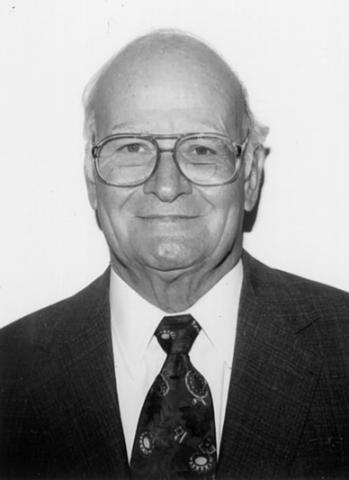
James E. Turner
The American Board of Health Physics (ABHP) is proud to present the William A. McAdams Outstanding Service Award to James E. Turner. This award is given annually to a Certified Health Physicist who has made significant contributions towards the advancement of professionalism in health physics and to the health physics certification process. The strength of the profession and the certification process relies on the professional strengths and leadership of the people who serve the American Academy of Health Physics (AAHP), the American Board of Health Physics, and the Panels.
Jim became certified in 1966. He served on the Comprehensive Certification Panel of Examiners from 1987 to 1992 and he was elected President of the American Academy of Health Physics for 1993. Jim's service on the Panel is recalled as superb. He was one of the Panel's most knowledgeable and helpful members. He was a prolific contributor to the question pool and the source of guidance for many panel members. He was a real gentleman who never made you feel that he was your technical superior, but certainly was and every one on the Panel knew it. During his tenure as president-elect and president of the AAHP, he led the effort to develop a draft Vision Statement for the AAHP. This Vision Statement was published in the December 1992 HP Newsletter and formed the basis for the development of the AAHP Long Range Strategic Plan. Jim also facilitated the transition of the ABHP from a separate corporation into an arm of the AAHP. During this period the AAHP approved the ABHP Policy Manual and gained responsibility for the funds formally held by the ABHP.
Jim has been associated with the radiation protection field from nearly the beginning of his career. He received an A.B. in physics from Emory University in 1951. He continued his education with an M.S. in industrial hygiene from Harvard University in 1953. He studied at the University of Gottingen, Germany, for one year as a Fulbright-Scholar (1953-1954). Finally, he earned his Ph.D. in Physics from Vanderbilt University in 1956.
Jim's first job was as a teacher at Yale University from 1956 to 1958. The official title was Instructor of Physics. He then moved to working with the Atomic Energy Commission in Headquarters from 1958 to 1962 as a radiological physicist. In 1962, he moved to Oak Ridge National Laboratory (ORNL), where he subsequently held a number of positions, starting in the old Health Physics Division. He became Associate Division Director from 1974-1977, before returning full-time into research. He was named a Corporate Research Fellow at ORNL in 1988. He retired from ORNL four years ago.
In 1978, Jim was President of the East Tennessee Chapter, Health Physics Society. This chapter presented him with its Lifetime Achievement Award in 1987. As a member of the Health Physics Society, Jim was elected to be a member of the Board of Directors from 1980 to 1983. The Society in 1988 honored his commitments in the area of health physics by making him a Health Physics Society Fellow and then in 1992 honored him again with the Distinguished Scientific Achievement Award.
Jim has served as a researcher in the field of interaction of radiation with matter, early physical/chemical events in irradiated liquid water, atomic and molecular interactions, and interaction of metal ions with nucleic acids and proteins (chemical dosimetry). Jim and his family spent a year during 1969 and 1970 at CERN in Geneva, Switzerland. There, as a visiting scientist, he carried out research on the use of negative pions for radiotherapy. He was a World Health Organization Consultant for two months, teaching health physics at the Bhabha Atomic Research Centre in Bombay, India, in 1967 and again in 1973. In 1978 and 1979, he was a consultant to the Institute of Nuclear Energy, Sao Paulo, Brazil. During his employment days and since retirement, he has also spent extended periods as a visiting scientist at the GSF-Institut fur Strahlenschutz, Neuherberg, Germany. As a result of all his research and teaching activities, Jim has been the author/co-author of over 250 open literature publications in the area of radiation physics and dosimetry and the chemical toxicity of metal ions. He has written or co-authored three textbooks on radiation physics and health physics, one of which is recommended reading for candidates preparing to take the Certification Exam (Atoms, Radiation and Radiation Protection, Turner, J. E., New York: Wiley-Interscience, 1995). Jim was also K. Z. Morgan's co-editor of Principles of Radiation Protection.
In addition to all these research and publishing activities, he has been an active participant in many national and international organizations. From 1962 to 1965, Jim was a member of the International Commission on Radiological Protection Task Group on High-Energy Dosimetry. From 1963 to 1965, he was a member of the National Academy of Sciences (NAS)-National Research Council (NRC) Subcommittee on Penetration of Charged Particles. From 1977 to 1984, he was a member of the National Council on Radiation Protection and Measurements. From 1980 to 1984, he was a member of the committee that prepared ICRU Report 37 on Stopping Powers for Electrons and Positrons. And, from 1988 to 1992, he was a member of the NAS-NRC Committee on Dosimetry for the Radiation Effects Research Foundation (RERF) (1988-1992). Jim and colleagues at ORNL hold a patent, Ionizing Radiation Detector System, that was granted in June 1990.
As stated earlier, Jim's first job was as a teacher. In reality, he never quit teaching. He just changed where and how he did it. Many students across the country perhaps know him from his textbooks, review articles, or PEP courses given over the years at the HPS annual meetings. For those fortunate enough to live in East Tennessee, you may have actually had the privilege of being in a class taught by Jim in the University of Tennessee Evening School, where he is still an adjunct professor in the Department of Nuclear Engineering. This past semester he taught a graduate course, Contemporary Health Physics, Preparation for the ABHP Part II Exam.
Because communicating the principles of radiation protection, radiation detection, and health physics is so important to Jim, he made a significant contribution in the area of the published word. Jim was one of the editors of the Health Physics Journal from 1974 to 1979. He was an Associate Editor of Radiation Research from 1980 to 1983 and again from 1991 to 1995. He is presently on the Editorial Boards of two other journals: Radiation Measurements and Radiation and Environmental Biophysics. Despite Jim's brilliance and notoriety, Jim has remained a down-to-earth and approachable individual.
Finally, in his spare time, for 45 years Jim has been the husband of Renate Turner, whom he met when he was a Fulbright student in Germany. They have three children.
Today, the American Board of Health Physics would like to recognize his many distinctive accomplishments and contributions to the certification process. I take great pride and privilege in presenting the 2000 William A. McAdams Outstanding Service Award to James E. Turner.
Robert P. Miltenberger, Vice Chair ABHP
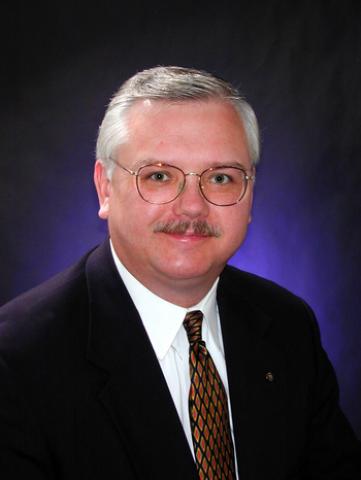
George J. Vargo, Jr
The American Board of Health Physics is proud to present the William A. McAdams Outstanding Service Award to George J. Vargo, Jr. This award is given annually to a certified health physicist who has made significant contributions towards the advancement of professionalism in health physics and to the health physics certification process. The strength of the profession and the certification process relies on the leadership and dedication of the people who serve the Board, the Examination Panels, the American Academy of Health Physics, and the Health Physics Society.
George's service to the profession of health physics has been impressive. He has served terms of office in the Western New York and Columbia Chapters, as well as on the Membership, Manpower and Professional Education, and International Relations Committees of the Health Physics Society. George is currently an Associate Editor and Software Editor for the Health Physics Journal and has written numerous book reviews. George has been selected as an official delegate to the IRPA Congresses in Montreal, Vienna, and Hiroshima. He was awarded the title of Fellow of the Society for Radiological Protection in 1998 and Fellow of the Institute of Physics in 2000.
George was certified by the American Board of Health Physics in comprehensive practice in 1984 and in the power reactor specialty in 1986. In 1989, George was granted the Certificate of Competence in Applied Health Physics by the Society for Radiological Protection in the United Kingdom.
George has been active in the ABHP's examination process for fourteen years. He participated on the Power Reactor Certification Examination Panel as a member, Vice Chair, and Chair. This was followed by a 5-year term on the American Board of Health Physics, during which time George served as Board Member, Parliamentarian, Secretary, Vice Chair, and finally as Chair in 1998.
While serving on the Board, George became convinced that the Part II examination process needed to be revisited in light of the cost required to produce a quality examination on a yearly basis. George led the effort to contract with an examination consultant to conduct a comprehensive job task analysis for the professional health physicist and to prepare a set of examination specifications for the Part II Exam. George has dedicated a significant amount of time to improving the Part II examination process, and he currently chairs the Part II Ad Hoc Examination Panel in preparing questions for the proposed new format of the exam.
George serves as the ABHP delegate to the Council of Engineering and Scientific Specialty Boards and was instrumental in the preparation and submission of the Board's application for accreditation with the CESB. Accreditation was granted to the ABHP earlier this year.
George developed an interest in health physics during his high school days while working on a science fair project. His project examined the structure of crystals, and George wanted to make measurements of crystal lattice size using x-ray diffraction. In order to obtain the needed measurements, George was referred to the Physics Department at Duquesne University in Pittsburgh, where several faculty members offered to assist him. Before George could use the equipment, however, he was required to complete a detailed radiation safety indoctrination on the potential hazards of the x-ray diffraction equipment and receive permission from the University's Radiation Safety Officer.
During the afternoons he spent around the Physics Department at Duquesne, George had the opportunity to meet Dr. Allen Brodsky, who had recently established an undergraduate program in radiological health. George was intrigued by the broad scope of the radiological health curriculum. He took classes at Duquesne during his senior year of high school, and enrolled in the radiological health program as soon as he was eligible following his high school graduation. After graduating from Duquesne with a B.S. degree in radiological health, George joined the staff of Radiation Service Organization in Laurel, Maryland, in 1978 as the Radiation Safety Officer. The following year, he headed north to the New York Power Authority's FitzPatrick Plant to pursue a career in power reactor health physics.
George spent the next ten years at the FitzPatrick Plant, holding a variety of positions with responsibilities for health physics training, emergency preparedness, respiratory protection, ALARA, and dosimetry. George also obtained a U.S. Nuclear Regulatory Commission Senior Reactor Operator license and, in addition to his regular health physics duties, routinely participated in shift operations for eight years.
While at FitzPatrick, George became interested in innovative source term reduction strategies to reduce the relatively high collective dose at the plant. George convinced senior management to invest in chemical decontamination of the reactor coolant system, which resulted in savings of over 700 person-rem and established a world record decontamination factor for a dilute reagent chemical decontamination. He also participated in and coordinated other source term reduction activities including hydrogen water chemistry, feedwater zinc addition and cobalt reduction programs. To achieve a better understanding of the contribution of various nuclear power plant radiation sources to worker dose, George developed a passive directional radiation probe using an array of TLDs. In 1992, he was granted a United States patent for this invention.
Along the way, George completed a Master of Science degree in Health Physics from Georgia Institute of Technology and a Ph.D. in applied physics from Columbia Pacific University. George stayed involved in education as an adjunct associate professor of nuclear engineering and engineering physics at Rensselaer Polytechnic Institute. At RPI, he supervised a number of senior projects for undergraduate students in the radiological engineering option and served on committees for several M.S. students. Despite the great distance from Richland, he still remains active at RPI and returns to New York to teach classes and give seminars.
In 1991, George left New York Power Authority and joined Battelle at the Pacific Northwest National Laboratory as a Staff Scientist. George was invited to join the DOE's International Nuclear Safety Program, where he assumed a lead role in projects to develop a nuclear and radiation safety regulatory infrastructure in the Russian Federation and to improve emergency preparedness. This program has required George to spend significant amounts of time in the Ukraine, as well as many other countries of the former Soviet Union.
George managed the Chernobyl Dose Reduction Project, whose goal was to transfer and upgrade health physics technology at the Chernobyl Shelter. George also recently edited a book on the Chernobyl accident. The book, titled The Chernobyl Accident: A Comprehensive Risk Assessment, originated from a compilation of Ukrainian technical papers, and included assessments of the risks posed by the shelter and damaged reactor, waste management, environmental impacts, and medical effects.
Somehow, in addition to this impressive list of professional activities, George finds time to engage in such hobbies as photography, amateur radio, and model rocketry. He also has been active in organizing the Tri-Cities' annual Tumbleweed Music Festival.
Today, the American Board of Health Physics and American Academy of Health Physics would like to recognize George for his leadership and accomplishments in the field of health physics and in the certification process. I take great pride and privilege in presenting the 2001 William A. McAdams Outstanding Service Award to George J. Vargo, Jr.
Kathryn H. Pryor, Vice Chair ABHP
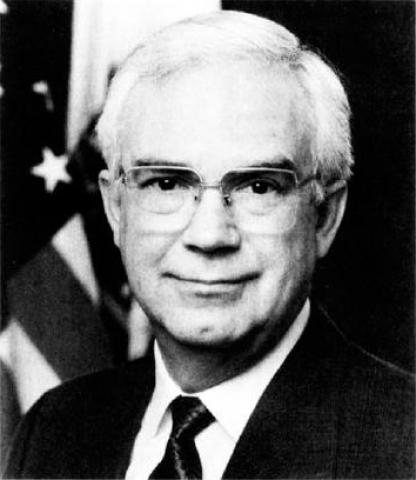
Paul L. Ziemer
The William A. McAdams Outstanding Service Award is presented each year by the American Board of Health Physics to recognize an individual who has made important contributions to advancing the profession of health physics and the health physics certification process. The Award was established in 1989 in honor of one of the American Board of Health Physics founders. William A. McAdams provided leadership, energy, and vision to the Board during its formation. He was a member of the 1958 Certification Committee formed by the Health Physics Society to investigate the need for a Board. Dr. McAdams then served as the chair of the temporary Board when it was formed in November 1958, and as the first Chair of the inaugural ABHP when it was formed in October 1959.
The first Award was presented in 1989 on the 30th Anniversary of the ABHP. Since that time 13 distinguished health physicists have received this award. Today we are gathered to honor a truly deserving health physicist and recognize him for his outstanding contributions to the profession of health physics and to the health physics certification process.
I am extremely pleased to announce on behalf of the American Board of Health Physics that Paul L. Ziemer, Ph.D., has been selected as the 2002 recipient of the William A. McAdams Outstanding Service Award. Dr. Ziemer's resume reads like an encyclopedia of health physics committees, boards, honors, and professional achievements. There is no field of health physics and the certification process that his contributions have not touched and been made better due to his contributions.
Following the receipt of his Bachelor of Science in physics from Wheaton College in Illinois, he enrolled at Vanderbilt University from which he received a Master of Science degree in radiological physics with a minor in mathematics. He continued his studies at Purdue University, which awarded him a Doctor of Philosophy in bionucleonics in 1962.
Dr. Ziemer has had a long and distinguished association with Purdue University and its health physics activities. He was its Radiological Control Officer, progressed through the academic ranks of Assistant, Associate, and full Professor, and served as Head of the School of Health Sciences. Dr. Ziemer is currently Professor Emeritus and Retired Head of the School of Health Sciences at Purdue University.
Over the past 43 years Dr. Ziemer has been directly involved in the undergraduate and graduate level instruction of over 400 individuals who are currently active in the health physics profession including 89 Ph.D. students, 121 M.S. students, and 205 B.S. students.
Dr. Ziemer has been a workhorse of the Health Physics Society. Three different times he has served on its Board of Directors (1970-1976, 1989-1990, and 1995-2000) and was the President of the Health Physics Society in 1975-1976. In addition he has served on most and chaired many of the standing and special committees of the HPS. Dr. Ziemer was the Chairman of the First Midyear Topical Symposium of the Health Physics Society in 1966. The Health Physics Society has recognized his professional achievements by naming him the Elda E. Anderson Award recipient in 1971, the G. William Morgan Lecturer in 1997, the Midwest Chapter's R. S. Landauer Memorial Lecturer in 1997, and the recipient of its Founders Award in 2001.
Dr. Ziemer has been an active participant in the American Academy of Health Physics since its inception. In 1985, the Board of the Health Physics Society approved a new set of Bylaws for the American Board of Health Physics that severed the indirect control of the ABHP by the HPS and allowed for the establishment of the American Academy of Health Physics as an entity. The HPS and the ABHP each appointed three members of the initial Executive Committee of the AAHP. Three additional members were to be elected by the membership of the Academy, that is the Certified Health Physicists.
In April 1985, the CHP's were asked to vote on the proposed Bylaws and to vote on the positions of President-Elect, Secretary, and one additional member of the Executive Committee. Dr. Ziemer was chosen as President-Elect. The initial Executive Committee first met on January 24 and 25, 1986. Les Slaback volunteered to organize and coordinate that first meeting, and Dr. Ziemer agreed to Chair it. At that meeting, Bryce Rich was elected to serve as President Pro Tem. Thus there was no regular President the first year since the Bylaws required the President to serve a year as President-Elect first. Dr. Ziemer served as the first President of the AAHP but during its second year of operation (1987). He is currently serving as a member of the Academy's Professional Standards and Ethics Committee.
Dr. Ziemer was first certified by the American Board of Health Physics in 1965 and has continued to be recertified since that time. He was most recently recertified in 2002. Since becoming a Certified Health Physicist, Dr. Ziemer served on the ABHP's Panel of Examiners (1969-1971) and as a member of the American Board of Health Physics in 1989 and 1990 and most recently from 1995 through 2000.
The scientific and technical capabilities and professionalism of Dr. Ziemer have also been recognized and sought out by national and international organizations outside the HPS, AAHP, and ABHP family. He has served with distinction on numerous committees of the American National Standards Institute, the International Standards Organization, the International Atomic Energy Agency, the National Council on Radiation Protection and Measurements, and the National Academy of Sciences Committee on the Biological Effects of Ionizing Radiation (BEIR-VI).
Dr. Ziemer has also served as a consultant and advisor to numerous private corporations, universities, national laboratories, and state and federal governmental agencies.
Two Presidents of the United States have sought the scientific and technical knowledge and professional wisdom of Dr. Ziemer. Former President George Bush appointed Dr. Ziemer to be the Assistant Secretary of Energy for Environment, Safety, and Health in 1990. He served in this position within the Department of Energy from 1990 through 1993. Earlier this year, President George W. Bush appointed Dr. Ziemer to be Chairman of the Advisory Board on Radiation and Worker Health.
Even with all these professional activities and achievements, Dr. Ziemer has also had a life outside health physics. He has been and continues to be active in his church at the local and national levels and has even been involved in the work of its seminary. He is actively involved in Rotary International. Most importantly, he also wooed and wed his wife of 43 years, Marilyn, and helped in the rearing of their four daughters.
In summary, Dr. Ziemer exemplifies what all of us should aspire to as Certified Health Physicists. His life of service, achievement, and dedication to the profession of health physics and the certification process, this nation, his community, his church, and his family has set a standard of excellence that should be the goal of all Certified Health Physicists.
It is with great pride, and even greater humility, that I present on behalf of the American Board of Health Physics the 2002 William A. McAdams Outstanding Service Award to a most deserving individual, Dr. Paul L. Ziemer.
Edgar D. Bailey, Vice Chair ABHP
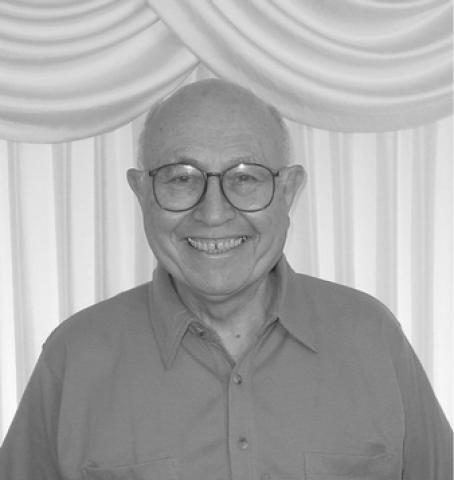
Herman Cember
Dr. Herman Cember is the recipient of the 2003 William McAdams Outstanding Service Award. This award is presented annually by the American Board of Health Physics (ABHP) and the American Academy of Health Physics (AAHP) to honor a certified health physicist who has made a significant contribution toward the advancement of professionalism in health physics and to the certification process. In conferring this award, the nominating committee especially recognizes the service of Dr. Cember on the ABHP Panel of Examiners, service as Past President of the AAHP, and his continuing involvement in providing health physics expertise, education and training via his publications-as well as summer school and associated PEP course teachings.
Herman has been a scientific contributor to various aspects of the health physics field for over forty years. He received his BS degree in electrical engineering from City College of New York and his MS and Ph.D. degrees in biophysics from the University of Pittsburgh. He has extensive experience in radiogenic lung cancer and heavy metal toxicology. As a radiological health and safety specialist, he has been active in education, research, and applied areas of the field. His scientific achievements have resulted in the Distinguished Scientific Achievement Award, from the Health Physics Society in 1990, to recognize his research associated with lung cancer.
Herman had been assistant professor, then associate professor, of Industrial Hygiene at the University of Pittsburgh Graduate School of Public Health from 1951 to 1960. He then went to the University of Cincinnati and served as associate professor of Industrial Health in the College of Medicine for five years-where he continued his teaching and research. In 1964, he became full professor of civil engineering at Northwestern University, where he directed the academic programs in Health Physics and Industrial Hygiene, as he continues to do today. During his long and successful academic career, Herman has always loved to help his students. He has an informal teaching style and welcomes all kind of questions. In fact, the only question he does not like is will this be on the test? He has encouraged students to do what they enjoy because they enjoy it, not for the money, since one third of a person's lifetime will be spent at work.
He has produced more than seventy publications. His book, Introduction to Health Physics, has been used widely as a primary textbook in the radiological health field and has been translated into Russian and Chinese. In addition to all of the foregoing research and publishing activities, he has been an active participant in international organizations. He spent a year as a technical expert in occupational health at the International Labour Office in Geneva in 1961.
Herman is currently a professor emeritus of the Department of Civil Engineering in Northwestern University and a visiting professor of the School of Health Sciences at Purdue University. He has been chairperson of the HPS summer school and presented numerous PEP courses at the annual Health Physics Society meetings.
Today, the American Academy of Health Physics and American Board of Health Physics are proud to honor and recognize the dedication, excellence, and continued contributions to the research, practice, and advancement of the profession of health physics and the certification process. I take great pride and privilege in presenting the 2003 William A. McAdams Outstanding Service Award to Dr. Herman Cember.
John A. Serabian, Jr, Vice Chair ABHP
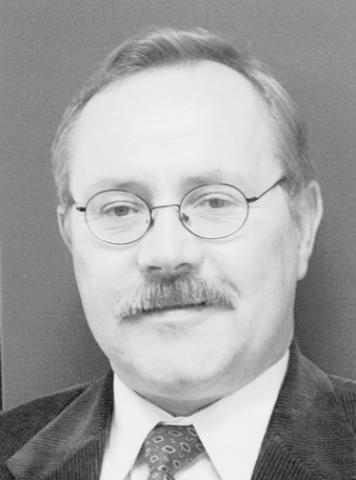
Edward F. Maher
Dr. Edward Maher is the recipient of the 2004 William A. McAdams Outstanding Service Award. This award is presented annually by the American Academy of Health Physics (AAHP) and the American Board of Health Physics (ABHP) to honor a certified health physicist who has made a significant contribution toward the advancement of professionalism in health physics and to the certification process. In conferring this award, the nominating committee especially recognizes Dr. Maher's sustained service to the programs and objectives of the ABHP for more than eighteen years. He has served as a member of the Panel of Examiners and as Chair of the Part II Panel. He has also served as a member of and in each of the offices of the ABHP. He continues his service as a member of the Health Physics Society Board of Directors, Secretary of the Society, and liaison to the AAHP from the Society.
Dr. Maher has more than 29 years of experience in conducting and managing radiological, safety, and environmental protection programs for clients. His educational preparation for this career began with his BS in electrical engineering from Lowell Technological Institute, Lowell, Massachusetts. He continued his education receiving his MS in biomedical engineering from Worcester Polytechnic Institute, Worcester, Massachusetts; and his doctor of science degree in radiological protection and health from the Harvard School of Public Health in 1985. It was at Harvard, under the guidance and mentorship of Dr. Dade Moeller, that Ed began his quest for health physics certification and full-time practice in health physics. His doctoral research was on radon measurement and control of radon in residences. Ed holds several patents with Dr. Moeller on indoor radon control technologies.
Upon receiving his BS degree, Ed was commissioned a second Lieutenant in the United States Air Force (USAF) and entered active military service in 1973 after completing his MS degree. He began his service conducting research and modeling studies in ocular laser damage that contributed to the development of laser exposure standards for the USAF Surgeon General. Ed was selected for doctoral studies at Harvard, and upon completion of his doctoral studies, he was assigned to the USAF Occupational and Environmental Health Laboratory, Brooks Air Force Base, San Antonio, Texas. Ed served in a variety of positions that provided environmental and occupational health services to worldwide USAF installations. In 1994, Dr. Maher retired from active military service holding the rank of Colonel.
Following his retirement from military service, he went to work for Arthur D. Little, Inc., providing consulting services on occupational health and safety, health physics, industrial hygiene, and process safety management. In 1996, he became Director of the Yankee Atomic Environmental Laboratory providing laboratory and consulting services to Yankee's Nuclear Power Stations. When the laboratory was sold to Duke Engineering and Services, Ed remained as Director of the Environmental Laboratory. In addition to the technical and management positions that have formed Ed's career, there has also been a business development thread through his career. He has held business development roles at Arthur D. Little, Duke Engineering and Services, and Framatome-ANP. Ed is currently employed by Dade Moeller and Associates providing support to the National Institute for Occupational Safety and Health performing individual dose reconstructions for claimants under the Energy Employees Occupational Illness Compensation Program Act.
As stated earlier, Ed decided to seek certification when he was a doctoral candidate at Harvard. He became a certified health physicist in 1986 and he immediately became involved in the certification process. From 1987 to 1992 he served on the ABHP Panel of Examiners. He chaired the Comprehensive Part II Panel of Examiners in 1992; this is a position with a great deal of responsibility and often, insufficient recognition for the personal commitment of time. As the Part II Chair, he made question writing assignments, conducted the workshop where questions were refined, led the question selection process, led the grading process and prepared statistical information on exam performance. He had two or three years off before serving on the Board progressing from Board member to Parliamentarian, Secretary, Vice Chair and Chair. Ed served as Parliamentarian and Secretary of the ABHP when the Board was seeking accreditation by the Council of Engineering and Scientific Specialty Boards. Ed undertook the task of revising and reformatting the ABHP Policy and Procedures Manuals to meet the requirements for accreditation while ensuring that the intent of Board policies and procedures were maintained. He continues his service as a member of the Health Physics Society Board of Directors, Secretary of the Society and liaison to the AAHP from the Society.
Today, the American Academy of Health Physics and American Board of Health Physics are proud to honor and recognize Dr. Maher for his many years of dedication and sustained service to the health physics profession and the certification process in particular. Dr. Maher exemplifies the personal attributes of the great leader that this award is named for. I take great pride and privilege in presenting the 2004 William A. McAdams Outstanding Service Award to Dr. Edward Maher.
Mary L. Birch, Vice Chair ABHP
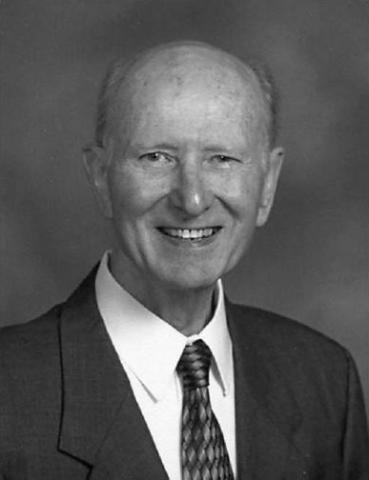
Dade W. Moeller
Here at this 50th Anniversary meeting of the Health Physics Society, we have been looking back and celebrating the origins of our society. We celebrate the first meeting, the creation of our professional journal, and the first steps to the establishment of the certifying body, the American Board of Health Physics. In our profession, we all owe a debt of gratitude to the founders who had a vision for the unique field of Health Physics. The early history of the Board mentions two names prominently: Elda Anderson, in whose name the HPS annually honors a young health physicist, and William McAdams.
In 1989, the American Board of Health Physics established an award for outstanding service to the Board and to the professionalism of the practice of Health Physics in the name of William McAdams. Sixteen Certified Health Physicists have been honored with the award. Today, I am pleased to announce that the seventeenth recipient of the William A. McAdams award is Dr. Dade Moeller.
Dr. Moeller was born and reared in rural Florida where he grew up on a farm as a child of the Depression. Upon graduating from high school in 1944 at age 17 (and with World War II underway), he enlisted in the US Navy and reported for active duty one month later. Seeing something special, the Navy sent him to school instead of to war. Had it not been for the war and the Navy, he might not have had an opportunity to attend college. His undergraduate career included studies at seven different schools and took an interesting turn. Because Dade desired to obtain a degree from Georgia Tech, he developed a plan to get admitted to the university. He learned that Georgia Tech would only allow a limited number of transfers from specific programs. At the University of South Carolina at the time, Dade found out that one student per year was allowed to transfer to Georgia Tech from Howard University in Birmingham. So off to Birmingham he went. Dade eventually transferred from Howard, which was a seminary school, to Georgia Tech and as Dade tells it, he was just one course short of completing his divinity degree and becoming a minister. After all of the transfers, Dade received a BS in Civil Engineering and a Masters in Sanitary (Environmental) Engineering from Georgia Tech in 1948.
Dade then began his first job as a commissioned officer in the US Public Health Service (USPHS). While in the USPHS, he earned his doctorate in Nuclear Engineering from North Carolina State in 1957. During his 18 years in the USPHS, he was stationed in 10 different cities. His duty stations included the Oak Ridge and Los Alamos National Laboratories, the headquarters offices of the Public Health Service in Washington, DC, the Robert A Taft Sanitary Engineering Center in Cincinnati, where he served as Director of Radiological Health Training, and the Northeastern Radiological Health Laboratory in Winchester, Massachusetts, where he served as Officer in Charge. In 1966, he retired from the USPHS and joined the Harvard School of Public Health as an Associate Professor. As Dade will tell you, he joined Harvard because they asked. His final position at the school was Dean of Continuing Education. He was also awarded an honorary degree by the university.
Counting his time in the Public Health Service as one job, and his subsequent appointment to the faculty of Harvard University as his second, he had only two employers prior to his "official" retirement in 1993. Dade is currently Professor Emeritus at the Harvard University School of Public Health. He remains active in our profession and serves President Emeritus and Chairman of the Board of Dade Moeller & Associates.
Many of you may not know that in the early years, the certification exam was offered twice a year. The first exam was offered by the ABHP on June 30, 1960 to fifteen applicants. Dr. Moeller successfully sat for the 2nd exam offered by the ABHP on December 10, 1960. He was one of 24 examinees and one of 14 who was successful.
Dr. Moeller was the first new member added to the initial ABHP Panel of Examiners with his term starting in the Panel's third year in 1962. He served on the Panel through 1965, and in his final year served as the Chair of the Panel of Examiners. He was named a member of the American Board of Health Physics the following year in 1966. He then served four years, from 1967-1970 as the Chair of the ABHP. His term of service remains the longest period of service as Chair in the history of the ABHP. This was also a period of great change as 1968 was the first year of the separate fundamental exam now known as the Part I exam. Dade also published an extensive analysis of the characteristics of applicants to be certified in the Health Physics Journal in May 1971. I should point out that Dade's mentoring was prominently mentioned in the citation of last year's recipient of the McAdams award.
Dr. Moeller was a member of the Advisory Committee on Reactor Safeguards and chaired the Advisory Committee on Nuclear Waste. He was on a subcommittee for BEIR-I (Committee on Biological Effects of Ionizing Radiation), and was a member of the BEIR-III Committee. He represented the US on Committee 4 of the International Commission on Radiological Protection, served as a consultant to the World Health Organization, and was elected an honorary member of the National Council on Radiation Protection and Measurements. One of his most recent activities (2002 - 2005) was to serve as chairman of the Science and Technology Review Panel, Office of Civilian Radioactive Waste Management, U.S. Department of Energy.
He is the past President of the Health Physics Society, and a fellow in the American Nuclear Society, the American Public Health Association, and the Health Physics Society. He is a registered professional engineer in New Mexico and a Diplomate in the American Academy of Environmental Engineers, in addition to being a Certified Health Physicist. He has received special honors from the Nuclear Regulatory Commission, Georgia Tech University, North Carolina State University, and the Robley D. Evans Commemorative Medal from the Health Physics Society.
A more detailed biography of Dr. Moeller was published in the Journal of the Health Physics Society in December 2003 honoring him as the recipient of the Robley D. Evans Medal. I would encourage all of you to look up the Evans' Medal Citation for more detail into his long career and accomplishments.
These accomplishments are even more impressive considering his lengthy publication list. Dr. Moeller's curriculum vitae runs 32 pages long with 237 specific publications as of June 2005, with over 30 since his retirement.
I would also be remiss in mentioning his accomplishments if I did not also mention his five children and sixteen grandchildren, and his service as an elder in the First Presbyterian Church of New Bern, NC.
To his extraordinary list of honors, it is my privilege and pleasure on behalf of the American Board of Health Physics to present the William A. McAdams outstanding service award to Dr. Dade Moeller.
James S. Willison, Vice Chair ABHP
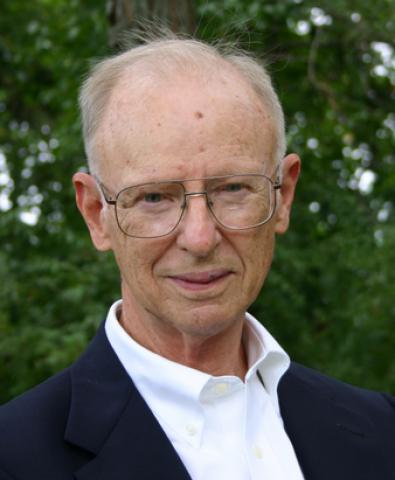
William C. Reinig
As we enter our 51st annual meeting of the Health Physics Society, it remains appropriate to continue to celebrate the accomplishments and years of service by the "founding" members and early contributors of the Society. Without the dedication, sacrifice, and guidance of these individuals, the Society and the American Board of Health Physics would not be what it is today.
Since the founding of the William A. McAdams award for outstanding service to the Board and professional contribution to the practice of health physics, seventeen Certified Health Physicists have been added to the roster of awardees. Today, I am very pleased to add to that list, the eighteenth recipient, William C. Reinig.
Bill Reinig served in the Navy during World War II. He received his bachelor of mechanical engineering degree from the Polytechnic University in New York in 1945. After the war he joined General Electric, and began his career as a reactor health physicist in 1946 at the Hanford Works under the supervision of none other than William McAdams. In 1948, he was employed by Associated Universities and became the leader of the radiation protection program at the nation's first peace-time research reactor at Brookhaven National Laboratory during its startup and initial operations.
In 1951, he was employed by the DuPont Company at the Savannah River Site to lead the preoperational environmental survey of the site. There he held various technical and management positions, including the superintendent of the Health Physics Department for 10 years. When Westinghouse became the operator of the Savannah River Site in 1988, he was appointed Deputy General Manager of the Environment, Safety and Health Department and a consulting scientist before his retirement in 1993.
Bill's activities for both the national and local Health Physics communities were numerous. He served on the Nominating and Code of Ethics Committees as well as the Council on Rules and Procedures. In 1964 and 1965, he was the Secretary of the Health Physics Society and in 1969-1971, he was a director of the Society. In 1979 and 1980, he was President-Elect and President. He is a charter member and a Fellow of the Health Physics Society. Bill also remained active on the local health physics scene, he was the Program Chairman of the 1968 Mid-Year Symposium and a Founder and President of the Savannah River Chapter of the Health Physics Society.
As one of the early contributors to the ABHP, Bill served on the first Examination Panel for the American Board of Health Physics from 1961 to 1967, serving as its chair in '62, '63, '64 and '66. He became a member of the ABHP Board of Directors in 1967, its Secretary-Treasurer from 1968 to 1974, and Chairman of the ABHP in 1975 and 1976. He also served as a director of the American Academy of Health Physics in 1986 and 1987.
Bill is a co-founder and serves as a director of Citizens for Nuclear Technology Awareness, the nation's largest non-profit, grass roots organization that supports the beneficial applications of nuclear energy. He served on the advisory committee for the Georgia Institute of Technology nuclear engineering and health physics programs.
He was elected to the National Council on Radiation Protection. During his six years on the Council, he chaired the scientific committee on tritium measurements. He is currently a consociate member of the NCRP.
Bill is the editor of the book, Environmental Surveillance in the Vicinity of Nuclear Facilities, and author of over forty technical papers.
Shawn Googins, Vice Chair ABHP
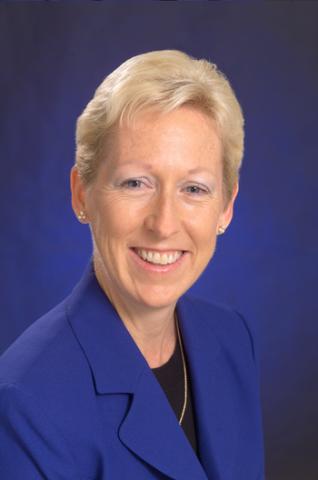
Kathryn H. Pryor
The William A. McAdams Award is given in recognition of significant contributions to the certification process and the promotion of professionalism in the field of health physics. This year the Award is given to Ms. Kathryn H. Pryor in recognition of her energetic dedication to the practice of health physics and her prolific professional accomplishments.
For the past 25 years, Kathy has provided management and technical support to radiation protection programs at radiological facilities regulated by the U.S. Department of Energy (DOE), U.S. Nuclear Regulatory Commission (U.S. NRC), and Agreement States. Her well-rounded background includes assignments at the Pacific Northwest National Laboratory (PNNL), Trojan Nuclear Plant, University of Southern California Health Sciences Campus, and Southern California Edison Company.
Kathy attended the St. Andrews Priory School for Girls in Honolulu, HI, and was not particularly fond of science during her high school years. She was especially not fond of biology, having had to catch and transport a very large toad to school to disect in her biology class. Kathy began her college education in fashion design at the University of Hawaii. She came to the realization that perhaps a fashion design degree was not going to put enough food on the table, and instead switched to pre-medicine at Washington State University. Kathy graduated from the University of Washington with a B.S. degree in Biology, followed by a M.S. degree in Radiological Sciences.
Following graduation, Kathy was offered a position at the San Onofre Nuclear Generating Station in San Clemente, CA. She worked with a large number of Certified Health Physicists, all of whom provided support and encouragement in pursuing certification by the American Board of Health Physics (ABHP). Kathy held technical support positions both at the plant and in Southern California Edison's corporate office. She then held the position of Radiation Safety Officer at the University of Southern California Health Sciences Campus, administering the school's radioactive materials license and managing the campus Radiation Safety Office. Kathy moved back to the Northwest for a position first as a Health Physicist and later as the Radaition Protection Technical Support Supervisor at the Trojan Nuclear Plant.
Kathy is currently a Chief Health Physicist at PNNL, with responsibility for regulatory analysis and technical support of the Radiological Safety and Health programs. Kathy also currently leads the Safety and Health task for the Pit Disassembly and Conversion Facility design project, managing the assessment of worker dose for the facility and the application of radiological controls to its design. Kathy previously held the position of Manager, Safety and Health Technical Support, managing a group of health physicists, industrial hygienists and safety engineers in providing technical support and field dosimetry services forhte Radiological Control and Worker Safety and Health programs at PNNL.
Kathy became interested in becomming a Certified Health Physicist while working as a technician in the University of Washington Radiation Safety Office. She has been certified by the ABHP since 1986, and was certified in both Comprehensive Practice and the Power Reactor specialty at the time. Kathy began her service to the ABHP on the Part II Examination Panel in 1990, including service as Vice Chair and Chair in 1993 and 1994. Following this, whe served on the ABHP as Board Member, Parliamentarian, Secretary, Vice Chair and Chair. Her service on the American Academy of Health Physics (AAHP) includes a term as the Secretary, as a Director, and on the Continuing Education and Nominating Committees.
While on the ABHP, Kathy actively provided oversight of the exam process in order to maintain a consistent level of quality. She also graded questions on the Part II exam each of the years that she was a Board Member, and frequently served as a Grading Group Leader. Kathy's goal as a Panel Member and subsequently as Panel Chair was to keep questions to a managable length, to strive for clarity and to maintain a balance of subject matter on the exam. Even years after her tenure, the ABHP continues to seek Kathy's counsel by asking her to perform final QA reviews of the certification examination in a process that has traditionally come to be know as the "Wise Person Review." She has ably served in this role many times.
During her tenure as Board Chair, the reengineering effort for the Part II Exam was underway. As a chief steward for the AAHP financial resources and the ABHP's reputation, it became important to reassess the progress towards reengineering of the Part II Exam. After carefully leading the Board through a rigorous analysis of the progress and status of this effort, the end result was that the Board voted to discontinue the reengineering effort and to examine alternate methods of achieving the goals of the Part II Exam. The succeeding Board did achieve this desired outcome through closing the Part II question bank and gathering statistics on the performance of the questions.
Kathy is currently serving as the Secretary-Elect of the Health Physics Society (HPS) and has previously served a term on its Board of Directors. She has also served the HPS on the Placement Committee, the Standards Committee, and as a member of various standards working groups. Kathy is a proud member of the Columbia Chapter of the HPS. The Chapter has greatly benefited from her active participation including offices as Secretary, President-Elect, President, and Past President. She also servied on the Local Arrangements Committee for the 2005 HPS Annual Meeting. Because of her many contributions to the field and her dedicated service to the Health Physics community and the profession, the Columbia Chapter selected her as the 2003 recipient of hte prestigious John P. Corley Meritorious Service Award.
Kathy and her husband, Dale, recently celebrated their 20th wedding anniversary. They have three teenaged children: Jeffery, Erik, and Lindsey.
Jim Tarpinian, Vice Chair ABHP
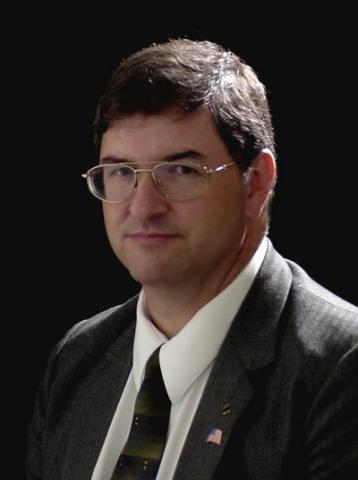
James S. Willison
James S. Willison is the recipient of the 20th William A. McAdams Outstanding Service Award. This award is presented by the American Academy of Health Physics (AAHP) and the American Board of Health Physics (ABHP) to honor a certified health physicist who has made a significant contribution toward the advancement of professionalism in health physics and to the certification process.
Jim earned a bachelor's and then a master's degree in nuclear engineering from Oregon State University in 1980 and 1982, respectively. He was also a recipient of an inaugural Institute of Nuclear Power Operations (INPO) fellowship.
Jim began his professional career at Portland General Electric Company (PGE). He gained progressive professional experience, and, in time, managed technical staff with responsibility for radiological engineering, internal and external dosimetry, radiation protection oversight, respiratory protection and environmental monitoring in support of the Trojan Nuclear Power Plant. During his 10-year tenure at PGE, he was the recipient of five PGE Notable Achievement Awards.
Also, while at PGE, Jim became a registered professional engineer. This is interesting because during this phase of his career, he was surrounded by certified health physicists, including last year's McAdams Award recipient, Kathy Pryor.
Jim spent the next eight years with NUS Corporation, where, at least initially, he was still a nuclear engineer surrounded by certified health physicists. Jim decided to join the crowd and seek ABHP certification. As part of his studies, he put together a binder containing copies of past Part II exams with Ken Skrable's solutions, which later became a significant resource for the Part II Panel. And, obviously, he succeeded in his effort to become a certified health physicist.
Mr. Willison presently works for Washington Safety Management Solutions LLC (WSMS), a part of URS Corporation, where he provides health physics and nuclear engineering support for government and commercial clients, including radiological design, accident analysis, shielding analysis, criticality, emergency preparedness, occupational and environmental health physics, as low as reasonably achievable (ALARA) considerations, and regulatory interpretations. But now, certain roles are reversed; he is surrounded by engineers. At WSMS, he has been a technical evaluator and instructor for the Federal Emergency Management Agency (FEMA) at power plant evaluations. Recently, his work with power plant licensing took him to Japan, which has inspired him to begin learning some of that language. In the eight years that he has been at WSMS, he has been the recipient of six WSMS President's Awards.
As impressive as his career has been, it is his service to the ABHP that has earned him this award. Jim Willison has served in the following roles since his certification in 1994:
- Exam Proctor, 1995-1998, 2005, 2006
- Part II Panel of Examiners, 1996-1999 (Panel Chair in 1999)
- Part II Reengineering Ad-Hoc Panel, 2001
- ABHP Board, 2002-2006 (including each officer position)
- Part I Panel of Examiners, 2007-2010
In the only year that Jim was not serving a position with the ABHP since becoming certified, Jim was busy preparing a report to the Board on evaluation criteria for Part II questions. He was also just appointed chair of the AAHP Continuing Education Committee.
As impressive as this may be, it is his contributions during this service that made Jim Willison the obvious choice for this year's award. A partial list of these contributions follows.
Web site contributions
- Increased use of secure Academy Web site - which improved the efficiency of exam question reviews
- Compiled the McAdams Award citations and prepared its history
Board function improvements
- Fostered closer relationships between the Board and Exam Panels; encouraged (and led by example) greater Board involvement in Panel workshops
- Instituted greater Board involvement in Part II grading
- Reformatted policy and procedure manuals into style guide format
Recognition of the Board, Academy, and certification process
- Pushed for recognition of ABHP and AAHP officers at national meetings through ribbons
- Advocated certification for non-certified health physicists
- Spearheaded the re-accreditation application with Council of Engineering and Scientific Specialty Boards (CESB)
- Addressed the issue of recognition of ABHP certification for medical radiation safety officers created when the U.S. Nuclear Regulatory Commission revised 10 CFR 35
Examination and examination preparation improvements
- Revised policy on SI Units for examinations
- Increased analysis of Part II Exam results
Three of his contributions warrant more extensive comment than a bulleted mention. Jim singlehandedly compiled the Part II Question Bank, an electronic database of approximately 160 questions with their solutions and performance data. While recycling questions was permitted prior to Jim's compilation, the database made re-using questions practicable.
Then he did the same thing for the Part I Panel, but this time with a question bank of approximately 600 questions. For the sake of brevity, the transformative effects of this will not be detailed, except to say that they were profound. Nonetheless, improving the examination is the ultimate metric. The examination preparation service reported that the 2007 Part I Exam was "a whole, whole lot better than it was a few years ago." While Jim doesn't deserve all the credit for this, the question bank he compiled allowed the Panel members to spend their energy where it mattered.
Finally, one cannot ignore what is perhaps Jim Willison's most visible contribution - the tropical shirt initiative. For those unaware of the significance of the tropical shirts - the Board wears tropical shirts at its meetings and on the day of the examination. Jim's explanation, "We've been called stuffed shirts; a stuffed tropical shirt is much more palatable."
It is fitting that Jim Willison receives this award in a major anniversary year. It was 50 years ago that the Health Physics Society appointed a temporary ABHP and named "an energetic and farsighted young man," William McAdams, as its Chair. Jim's most significant accomplishments merge fundamental principles from the past with today's technology to advance the certification process. It is my privilege and pleasure on behalf of the ABHP to present the William A. McAdams Outstanding Service Award to another energetic and farsighted young man, James S. Willison.
Kent Lambert, Vice Chair ABHP
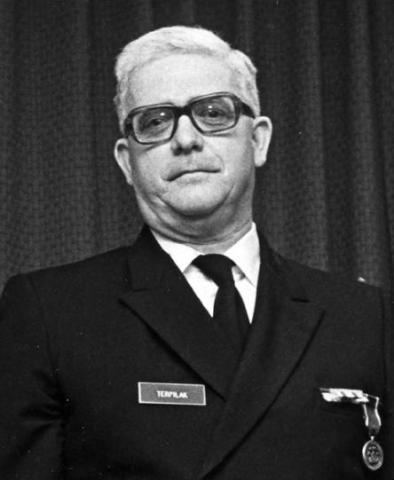
Michael S. Terpilak
The William A. McAdams Outstanding Service Award is presented annually by the American Academy of Health Physics and the American Board of Health Physics (ABHP) to honor a certified health physicist who has significantly contributed toward the advancement of professionalism in health physics and to the certification process. The 2009 McAdams award is granted posthumously to Michael S. Terpilak.
In conferring this award, the nominating committee honors Mike's life-long commitment the programs and objectives of the ABHP. Mike was a member of the Comprehensive Examination Panel from 1969 to 1975 and its Chair from 1974 to 1975. He also served as a member of the American Board of Health Physics from 1976 to 1980 during which time he served as secretary-treasurer and chairman. Mike was also one of the two ABHP members appointed to the initial National Registry Radiological Protection Technologists exam panel. After leaving the board in 1980, he was hired as the first (part-time) Executive Secretariat for the ABHP, a role which he fulfilled until 1983.
Mike was also very active in the Baltimore-Washington Chapter of the Health Physics Society (BWCHPS), serving as its president in 1971. He started the first ABHP certification course in the chapter in 1966 to 67. This course provided a good review for exam candidates and became a "must" in the world of exam preparation for many candidates. The BWCHPS awarded him a Distinguished Service Plaque for this effort. Mike was also the co-publisher of the "The Health Physics and Radiological Health Handbook," (aka the "pink book") which is still in use by health physicists everywhere.
Mike was born on the lower east side of Manhattan and lived in New York City until his late 20s. He attended Polish Catholic Parochial School and was an altar boy. He later attended Cardinal Hayes High School in the Bronx. After graduating from New York University, he served in the Army during the Korean War. After his Army service, Mike returned to New York City to work for the Department of Health for the City of New York. That job piqued his interest in health-related occupations and he became a public health sanitarian, and eventually a health physicist. He worked as a health physicist at the Ginna Nuclear Power Plant in Rochester, New York, during the early days of that plant.
Subsequently, he joined the Commissioned Corps of the Public Health Service (PHS) as a sanitarian. Mike was assigned to the PHS's Bureau of Radiological Health in the radioactive material program. There he did investigations on radon daughters found in jewelry made from spent radon seed used in cancer therapy in the 1920s and 30s. Because of his interest in jewelry he worked with the gold industry to try to devise guidelines for preventing radioactively contaminated gold from entering the industrial and jewelry market. He also brought attention to the importation of gem stones from South America that had been exposed to neutron radiation to enhance their color. In addition, Mike was the Secretary/Treasurer of Bethesda Jewelers, a full-service jewelry store in downtown Bethesda, operated by his wife and son.
Mike was a practical field health physicist and enjoyed the challenges that came with field work. He was the health physicist for the refueling and decommissioning of the nuclear power cargo ship NS Savannah. He also wrote health physics procedures for the Army Packaged Power nuclear reactor and subsequently went to Antarctica to support the installation of it at McMurdo Sound.
Mike was an integral part of the Public Health Service/Bureau of Radiological Health response to the Three Mile Island Unit 2 accident. As a result of the accident, the Public Health Service formed an Office of Health Physics and Mike was named Deputy Director. He retired from the PHS in 1982.
After his retirement from PHS, Mike cofounded Nucleon Lectern Associates, a health physics education company that published the first commercial version of "The Health Physics and Radiological Health Handbook," which is used by health physicists everywhere. Mike worked for or consulted with many federal agencies, including the Smithsonian Institute, Food and Drug Administration, the Federal Bureau of Investigation, the U.S. Nuclear Regulatory Commission, and the Secret Service. In addition, he consulted with companies in the private sector. He also was active in and a founder of the local chapter of the American Association of Radon Scientists and Technologists. Mike was also a part-time radiological consultant with Bishop & Associates in Baltimore. Mike died April 11 2007 and is survived by his wife Katherine, son Thomas and daughter-in-law Sue; and his son Jeffrey.
Patricia A. Milligan, Vice-Chair ABHP
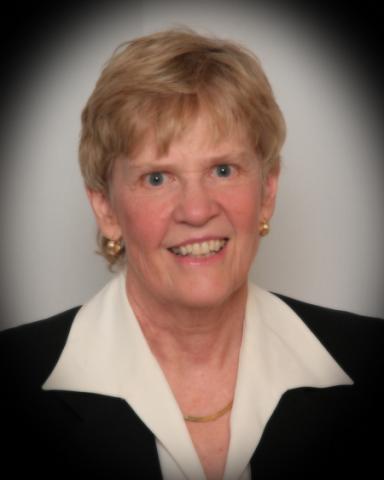
Nancy P. Kirner
Nancy P. Kirner is the recipient of the 2010 William A. McAdams Outstanding Service Award. This award is presented annually by the American Board of Health Physics (ABHP) and the American Academy of Health Physics (AAHP) to honor a certified health physicist who has made a significant contribution toward the advancement of professionalism in health physics and to the certification process. In conferring this award, the nominating committee especially recognizes Kirner's sustained service to the programs and objectives of the ABHP for more than 20 years. She has served as a member of the Panel of Examiners, as Chair of the Part II Panel, as a member of the ABHP, and has held each office of the ABHP. She was elected Treasurer and President of the American Academy of Health Physics. She also served the profession of health physics as a member of the Health Physics Society Board of Directors.
Nancy Kirner was first introduced to the profession of health physics in 1968 when she was enrolled in an "Introduction to Health Physics" course at the Civil Engineering Department of Tufts University, given by Jerry Parker, then the Director of the Massachusetts Radiation Control Program. After graduating from Tufts University with a BS in Biology, she earned her Masters Degree in Environmental Health Sciences (Radiological Health) from G. Hoyt Whipple's program at the University of Michigan, in large measure due to an Atomic Energy Commission fellowship. Her internship at Brookhaven National Laboratory, under the direction of Charles B. Meinhold and Charlie Flood, taught her how the profession of health physics was practiced.
Her first paying job in health physics was with the University of Michigan's Radiation Control Service, ably headed by Art Solari. After two years in Ann Arbor, she and her husband moved to Olympia, Washington. Jobs were scarce there, so she and her husband, John, started a family. Soon after their daughter Katherine was born, a position opened with the State of Washington's Radiation Control Program, under the direction of Robert C. Will. Within the first month, she was given the opportunity to deliver a paper at the Columbia Chapter Health Physics Society. Bringing the baby with her on the five-hour journey, and begging some of the men in the back of the room to watch her baby during the presentation, Nancy soon learned that her baby ruined Ron Kathren's tie. Thus began a long-lasting mentoring relationship with the Columbia Chapter and its many great health physicists and members of the Academy.
Nancy was employed by the State of Washington for 12 years, during which time she begame a Certified Health Phyisicist in 1978, gave birth to son Steven in 1979, and begame a skilled Agreement State regulator and specialist in low-level radioactive waste. Seeking to practice more health physics, Nancy had the distinct pleasure to work in a large consulting firm with David A. Waite, an Academy member and former president of HPS. After nine years as a consultant with this firm, she started Kirner Consulting, Inc., in 1996, and has been its president ever since, sometimes working for and with the Cascade Chapter and members of the Columbia Chapter who babysat Katherine in 1975.
Nancy's path to certification and participation in the certification process is a testament to hard work and balancing work and family. Shortly after gaining certification, Ron Kathren recommended Nancy as a member of the ABHP Panel of Examiners. She would eventually chair the Comprehensive Part II Panel of Examiners for the 1988 Exam. After recovering from that position, (arguably the most time-consuming and critical position of responsibility that the Board has to offer), she was appointed to serve on the American Board of Health Physics, progressing from Board member to Parliamentarian, Secretary, Vice Chair, and then Chair in 1999. She also served as elected Treasurer of the Academy in 1989-1990 and held the offices of President-Elect, President, and Past-President of the Academy from 2007-2009.
Today, the American Academy of Health Physics and American Board of Health Physics are proud to honor and recognize Nancy Kirner for her many years of dedication and sustained service to the health physics profession and the certification process in particular I take great pride and privilege in presenting the 2010 William A. McAdams Outstanding Service Award to Nancy P. Kirner.
Nora Nicholson, Vice Chair ABHP
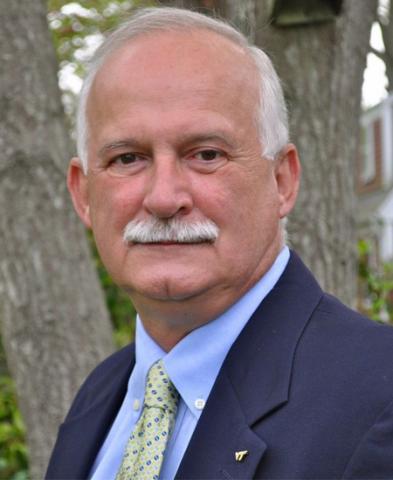
Jerry W. Hiatt
For sustained and outstanding services to the American Board of Health Physics (ABHP) and the American Academy of Health Physics (AAHP), Jerry W. Hiatt is awarded the William A. McAdams Outstanding Service Award for 2011. The award was established in 1989, and it is presented annually by the ABHP and AAHP to honor a certified health physicist who has made a significant contribution toward the advancement of professionalism in health physics and to the certification process. In conferring this award, the Awards Committee noted Jerry's long association with the ABHP and his leadership role in initiating, developing, and implementing numerous improvements to the certification process. His services have collectively resulted in practical tools that have been in use since then.
Certified in 1984, Jerry was one of the early contributors to the ABHP when he served on the initial Part 1 Exam panel from 1988 to 1992. He became Vice-Chair in 1989 and the Chair in 1990. During this period, he spearheaded the assembly and maintenance of the first word-processed Exam bank, which has since then become a very valuable tool in exam preparation. Jerry also played a pivotal role in developing and administering the very first "Passing Point" Workshop and in leading two subsequent workshops. Jerry served on the Part 2 Exam panel from 1995 to 1999. In 2004, he was elected to the ABHP as Board Member and served his full term until 2008. During 2005 and 2006, he served as the Parliamentarian. His high standards, professionalism, and knowledge were deeply appreciated by his colleagues on the Board. A dedicated volunteer, he gave freely of his time and expertise to make a difference in the quality of the services provided by the ABHP. Jerry's constructive approach and wise counsel contributed greatly to the Board's continuous improvement of the certification process.
Jerry's volunteer activities have not been restricted to the ABHP. He has also contributed to the RP2020 Task Force and the Nuclear Uniform Curriculum Program of the Nuclear Energy Institute. He has contributed to ANSI N42.33, "American National Standard for Portable Radiation Detection Instrumentation for Homeland Security," and ANSI N42.37, "Training Requirements for Homeland Security Purposes Using Radiation Detection Instrumentation for Interdiction and Prevention." He is currently on the Review and Rewrite Committee of ANSI 3.1, "Selection, Qualification, and Training of Personnel for Nuclear Power Plants." He also served on the Board of Directors - Power Reactors Section of the Health Physics Society. He is a member of Linn State Technical Institute, Aiken Technical College, and Indian River State College Advisory Boards. He has been a plenary member of the HPS since 1977.
Jerry graduated in the initial class with a B.S. in biology with health physics option from the Virginia Polytechnic Institute and State University in 1975. He has held a variety of health physics positions, progressing rapidly in his career. He started his health physics career as a Health Physics Technician for the Surry Nuclear Power Station. In 1976, he joined USNRC-Region III as a Radiation Specialist where he inspected and evaluated health physics programs at PWR, BWR, and research reactors, and at uranium conversion facilities for compliance with technical specifications/license conditions, NRC regulations, and industry standards. Jerry was on the initial USNRC Response Team for the Three Mile Island Incident and rotated through various assignments during the recovery process. He also played a substantial role in the planning and establishment of the Region III Incident Response Center and in the development of the post-TMI Region III Emergency Plan. Later, from 1979 to 1985, he was the Principal Health Physicist for the NUS Corporation where he performed a variety of tasks including ALARA training, developing health physics programs, writing and reviewing procedures and documents, and site emergency plans for multiple domestic and international - Slovenia, Spain, and Japan - nuclear power plants.
His assignments also included the development of an integrated and systematic approach to initial training across all of the Progress Energy nuclear sites, as well as developing radiation safety procedures for the start-up of the Harris Nuclear Plant. In 1985, he moved to the Vogtle Electric Generating Plant (VEGP, Bartlett) as a Radiological Consultant where he assisted in the development of the VEGP Readiness Review Program and procedures and participated in the radiological "readiness review" process for initial station start-up. In 1986, he transitioned to his current position as the Chief Technical Officer and Executive Vice President for Environmental Safety and Health at the Corporate Office, Bartlett Holdings, Inc., where one of his passions remains providing training and guidance to employees (domestically and internationally) seeking to advance their careers in radiation safety.
Jerry's many years of sustained and dedicated service to the ABHP and the health physics community at large make him fully deserving of recognition and applause. With this award, Jerry joins an elite group of 22 previous recipients. It is with great pleasure that I present the William A. McAdams Outstanding Service award for 2011 to Jerry W. Hiatt.
Govind R. Rao, ABHP Vice Chair
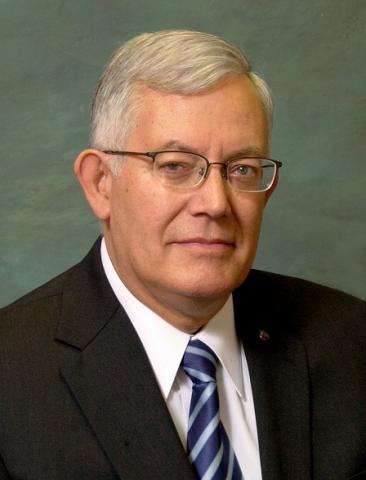
Robert N. Cherry, Jr.
For sustained and outstanding services to the American Board of Health Physics (ABHP) and the American Academy of Health Physics (AAHP), Robert ("Bob") N. Cherry is awarded the William A. McAdams Outstanding Service Award for 2012.
The award was established in 1989 and is presented annually by the ABHP and AAHP to honor a certified health physicist who has made a significant contribution toward the advancement of professionalism in health physics and to the certification process. In conferring the award, the committee noted Bob's longstanding service to the ABHP, ranging from being a Panel II member to providing expert guidance as a "Wise Person" reviewer. A stickler for details, his meticulous approach in dissecting an exam and his in-depth reviews have transformed many an exam into a high-quality professional product consistent with the high standards set by the ABHP.
Bob received his certification in 1981 and has ever since contributed to the ABHP in one capacity or another. He served as a Panel II member from 1991 to 1993. He became the Panel II Vice-Chair in 1994 and the Chair in 1995. He was elected to the ABHP Board in 2000 and served as a member until 2004. During 20005-2006, he was the ABHP liaison to the Council of Engineering and Scientific Specialty Boards (CESB). His tenure as a Board member is filled with anecdotal evidence of his drive toward the advancement of professionalism in health physics and the certification process. His colleagues have expressed deep appreciation for his vigilance and attention to detail. Subsequent to Board membership, Bob has continued to serve the ABHP as a "Wise Person" reviewer. The Board routinely selects three health physics experts not directly connected with the exam development process to conduct a final review of the Part II exam. The value of this review cannot be understated, and Bob's contribution to this process is nothing short of monumental.
Bob's volunteer activities have not been restricted to the ABHP. He has served in elected positions at national and local professional societies. He was the driving force behind the formation of the Military Health Physics Section of the HPS. He recently completed 3 years of service on the Health Physics Society Board of Directors and Executive Board as Secretary-elect and then as Secretary. He became a Fellow of the Health Physics Society (HPS) in June 2006.
Bob holds a Ph.D. in Nuclear Physics from the University of Michigan. Spanning over 30 years, his career has taken him from a Health Physics Officer at the Brooke Army Medical Center in Texas to his current position as Radiation Safety Staff Officer at the HQ, U.S. Army Installation Management Command in San Antonio, TX. In between, he has been an Associate Professor of Physics, U.S. Military Academy in West Point, NY; Radiation Protection Safety Officer, U.S. Army Health Services Command, Fort Sam Houston, TX; Chief of the Microwave Division and subsequently Director of Radiation and Entomological Sciences at the U.S. Army Environmental Hygiene Agency, Aberdeen Proving Ground, MD; Army Radiation Safety Officer, U.S. Army Safety Office, Washington, DC; Senior Health Physicist, Dade Moeller and Associates, Inc.; Director of the center for Radiological Emergency Preparation, Prevention, and Response, U.S. EPA, Washington, DC; and Senior Health Physicist, AECOM, Brooks City-Base, TX.
In addition to combat in Vietnam, his military assignments have included the Enewetak radiological cleanup. As a colonel working at Headquarters, Department of the Army, in the Pentagon, his was the first to hold the title and position of Army Radiation Safety Officer and virtually single-handedly designed and implemented the first comprehensive Army-wide radiation safety program. He became a member of the U.S. Army Field Artillery Officer Candidate School Hall of Fame in 1995.
Bob has many publications and presentations. Notably, his was the chapter editor and author of three articles in the ionizing radiation safety chapter in the current edition of the International Labor Organization's Encyclopedia of Occupational safety and Health and the author of the U.S. Army's regulation on Army Radiation Safety. He is currently an associate editor for Operating Health Physics.
His many years of sustained and dedicated service to the ABHP and the health physics community at large make him fully deserving of recognition and applause. With this award, Bob joins an elite group of 23 previous recipients. It is with great pleasure that I present the William A. McAdams Outstanding Service Award for 2012 to Robert N. Cherry.
Govind Rao, Vice-Chair ABHP
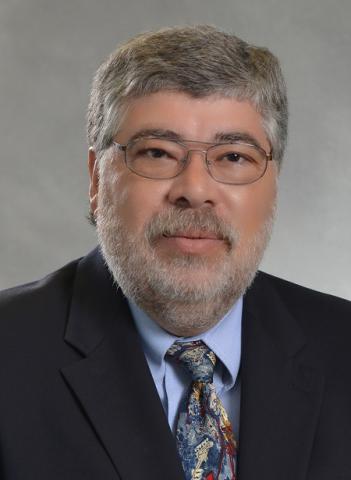
Kent N. Lambert
For sustained and outstanding services to the American Board of Health Physics (ABHP) and the American Academy of Health Physics (AAHP), Kent Lambert is awarded the William A. McAdams Outstanding Service Award for 2013. The award was established in 1989 and is presented annually by the ABHP and AAHP to honor a certified health physicist who has made a significant contribution toward the advancement of professionalism in health physics and to the certification process.
In conferring the award, the committee noted Kent's dedication to the profession of health physics for 34 years, serving as board member to the HPS and ABHP, as ABHP Board Chair, and as Panel Chair for ABHP Exam Part I. Currently Kent is implementing solid radiation safety programs at several academic and medical institutions. He continues to provide his service to various committees both inside and outside the Health Physics Society and provides mentoring to new health physicists. Kent has a keen intellect that provides a critical review to radiation safety practices and policies. He never hesitates to stand up for his beliefs and treats those with whom he associates with the utmost professional respect.
Kent received his certification in 1990. Beginning in 1999, his service to the ABHP began, and he has ever since contributed to the certification process in one capacity or another. He served as a Part I Panel member from 1999 to 2003, chairing the panel in 2002. During his term as past-chair, he ran a passing point workshop and then critically evaluated the methodology used. This set in motion an overhaul in the method of setting the Part I passing point.
He was elected to the ABHP Board in 2007 and served as vice-chair, parliamentarian (two terms), and chair. During his terms as parliamentarian, he completed a comprehensive review of the policy and procedure manuals and offered major revisions to each. While chairing the Board, Kent made substantive changes to the application forms, allowing them to be completed electronically. He also performed much of the Part II exam data analysis and report preparation.
Kent served as the ABHP representative to the Council of Engineering & Scientific Specialty Boards (CESB) from 2010-2011. He created a mechanism to allow an appointed individual to serve on the CESB to afford more continuity of ABHP representation and increase its influence. Kent currently serves as the alternate to the current ABHP representative to the CESB.
Even after ending his official capacity on the ABHP, he helps get the Part I exam started and has assisted the new Chair. Kent even volunteered for the dreaded task of grading Part II exams. Currently, he is the co-Chair for the International Radiation Protection Association (IRPA) working group on certification programs tasked with preparing guidance documents to assist IRPA associate societies in developing certification programs in their countries.
Kent's volunteer activities have not been restricted to the ABHP. Kent became a Fellow Member of the Health Physics Society in 2010 and served on its Board of Directors from 1998-2001, as HPS Treasurer from 2002-2004, as parliamentarian from 2009-2011, and on numerous committees. At the local level, Kent has served as president for the Delaware Valley Society for Radiation Safety on two separate occasions.
Kent holds a Master of Science degree in Radiation Sciences from Rutgers University and a Bachelors of Science Degree in Radiation Protection Engineering from Texas A&M. Kent is currently the Director of Radiation Safety and Radiation Safety Officer at Drexel University and is responsible for the radiation safety programs at Drexel University, St. Christopher's Hospital for Children, and Shriners Hospitals for Children Philadelphia. For many years, he was the consulting radiation safety officer for Hahnemann University Hospital, the Medical College of Pennsylvania, and Cancer Treatment Centers of America in Philadelphia, and provided consulting health physics services to five Tenet hospitals in Philadelphia. Previously Kent worked at Temple and Princeton universities.
His many years of sustained and dedicated service to the ABHP and the health physics community at large make him fully deserving of recognition and applause. With this award, Kent joins an elite group of 24 previous recipients. It is with great pleasure that I present the William A. McAdams Outstanding Service Award for 2013 to Kent Lambert.
Patrick J. LaFrate, Vice-Chair ABHP
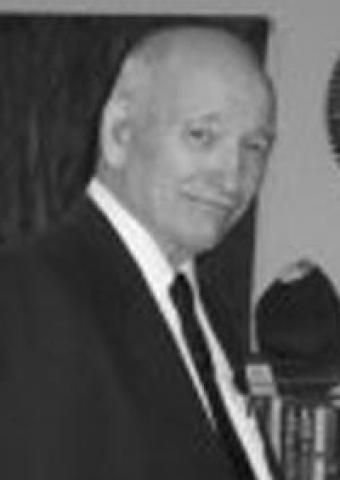
Lester K. Aldrich II
In memory of his sustained and outstanding services to the American Board of Health Physics (ABHP) and the American Academy of Health Physics (AAHP), Lester Aldrich is posthumously awarded the William A. McAdams Outstanding Service Award for 2014. His daughters, Ann Aldrich Lambel and Linda Aldrich Urias, accepted the award on his behalf. The award was established in 1989 and is presented annually by the ABHP and AAHP to honor a certified health physicist who has made a significant contribution toward the advancement of professionalism in health physics and to the certification process.
Les was lost to the profession late in 2006 following a career that spanned more than 22 y in health physics, primarily at Hanford. In conferring the award as a memorialization, the committee noted Les' enduring dedication and service to the profession of health physics over many years. Les served as a Director of the AAHP from 2002 through 2004, as well as serving both as an ABHP Part II Exam Panel member and as Part I Exam Panel Chair.
Les received his certification in 1982. Perhaps his most enduring and least visible contribution to the profession was his involvement in the Continuing Education Committee of the AAHP. During the formative years of the Academy, Les was instrumental in recruiting, establishing, and promoting the full-day continuing education programs sponsored by the Academy in conjunction with Health Physics Society meetings, including the diversity of sub-topics, the quality of training materials, and the level of instructor expertise that we have since come to take for granted. Les, who was outspoken, opinionated, and occasionally contentious as a health physicist, was instrumental in the early integration of the Academy's continuing education efforts with those of the larger Health Physics Society professional enrichment programs, a teaming that appears seamless today but only because of the teamwork and finesse that Les and other committee members expended.
Les' volunteer activities were by no means restricted to the ABHP and AAHP, as he was active in his church and many organizations outside the profession. The Boy Scouts of America awarded Les its prestigious Silver Beaver Award, recognizing him as one of the Scout leaders who have made an impact on the lives of youth through service given to the local Boy Scout Council. Those of us who were privileged to be mentored by Les as radiation protection professionals can readily appreciate that his scouting involvement positively impacted many young men. Additionally, Les was active in MENSA, the NRA, the GOP, Gideons International, and Walk-to-Emmaus.
Les held a Master of Science degree in Nuclear Engineering from North Carolina State University, where he coached all of the university rifle teams. The NCSU rifle team was ranked as the number one non-scholarship college rifle team in the nation during several years under Les' leadership.
At the time of the Chernobyl disaster in 1986, Les' professional responsibilities at Hanford included oversight of health physics technical support to the Hanford N Reactor. Up until that time, this USDOE facility had been operational as a "dual purpose" graphite moderated reactor providing both DOE mission support and power to the Bonneville Power Administration grid. Those of us who worked for Les remember that he had strong feelings about the value and viability of the N Reactor, but he calmly insisted that we continue to focus on technically sound radiation protection practices and ignore the media and bureaucratic "fallout" of the Chernobyl event as it reflected on the N Reactor's future (and its ultimate demise).
His many years of sustained and dedicated service to the ABHP and the health physics community at large make Les deserving of our recognition and memorialization. With this award, Lester K. Aldrich II is added to an elite list of 25 previous recipients. It is with a mixture of pleasure for his mentoring and sadness from his loss to us that we present the William A. McAdams Outstanding Service Award for 2014 in memory of Les Aldrich.
Patrick J. LaFrate, Vice-Chair ABHP
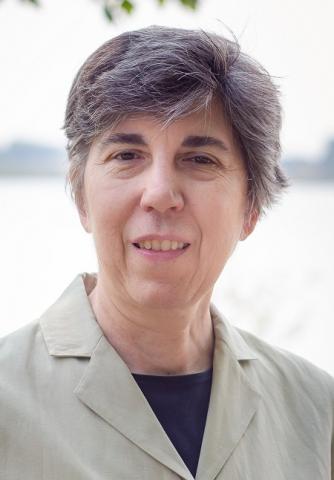
Nora Nicholson
The winner of the 2015 William A. McAdams Award was Nora Nicholson, a Health Physicist III for Dominion Generation at the North Anna Power Station in Mineral, VA. She received her undergraduate degree with distinction from Virginia Polytechnic Institute and State University (Virginia Tech) in Biology with a Health Physics option and a minor in chemistry. She also received a U.S. Department of Energy (DOE) Health Physics Fellowship and completed her Master of Science in Radiation Science degree with honors at Rutgers University.
Nora began her health physics career as a radiation specialist for the U.S. Nuclear Regulatory Commission in Region III. She then worked for Bartlett Nuclear at Nine Mile Point before joining Virginia Power as a Staff Health Physicist at the North Anna Power Station in Mineral, VA. Since joining North Anna, she has progressed in technical and supervisory areas and has taken on additional programs and responsibilities. These have included managing health physics program changes for the exposure management system replacement and implementation at the four Dominion sites; conducting assessments and observations of station performance improvement in the health physics, chemistry, training, emergency preparedness, security, and corrective action programs; and also serving as a National Voluntary Laboratory Accreditation Program (NVLAP) Technical Director for the commercial reactor dosimetry program.
Nora was also assigned as a Senior Project Manager to NUMARC/NEI. She managed dosimetry projects that included hot particles, Committed Effective Dose Equivalent, and electronic dosimetry. She coordinated comments from the industry and provided input to regulators' inquiries. She also reviewed and evaluated technical and research reports related to these projects.
She was initially certified in the practice of health physics in 1991 and joined the American Board of Health Physics (ABHP) Part 1 Panel of Examiners from 1993-1997. She then served on the Part 2 Panel of Examiners from 1997-2001.
When a Part 2 panel member was unable to participate, Nora graciously stepped in from 2003-2004 and volunteered to complete the term. She joined the ABHP as a Board Member from 2006-2011 and served as Secretary in 2009 and Vice Chair in 2010.
When the Board lost a member in 2012 due to a sudden passing, Nora returned to the Board to complete his term. She guided us through once again in 2013, serving as Chair.
She continues to serve as the liaison between the ABHP and our accrediting body, the CESB.
Nora exemplifies the outstanding service to the ABHP that symbolizes the McAdams Award. Congratulations, Nora!
Andy Miller, Vice-Chair ABHP
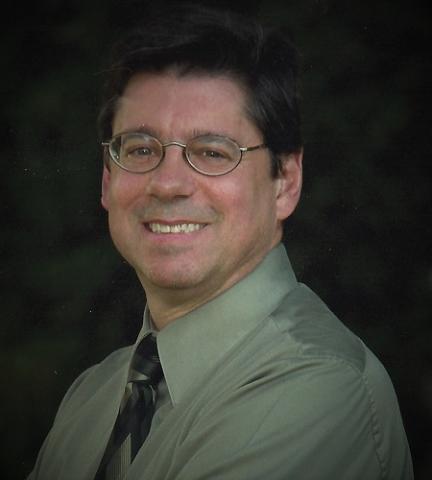
James E. Tarpinian
It is an honor and privilege to announce James E. (Jim) Tarpinian as the 2016 McAdams award winner. The award was established in 1989 and is presented annually by the ABHP and AAHP to honor a certified health physicist who has made a significant contribution toward the advancement of professionalism in health physics and to the certification process.
Jim received his undergraduate degree in Biology from the University of Connecticut and his graduate degree in Radiological Sciences and Protection from the University of Lowell (now UMass Lowell). He has over 36 y of experience in industry and is nationally recognized as a highly experienced environmental, safety and health professional with demonstrated solid leadership in occupational safety and health management, health physics, environmental remediation, and waste management.
His roles and experience have been diverse, ranging from supervising radiological waste engineering activities and managing Radiological Engineering at Three Mile Island in the 1980s to Managing Safety, Health, and Quality for Bechtel at a variety of projects in the 1990s. Since 2000, he has held a variety of prestigious positions such as Director, ESHQ, Brookhaven National Laboratory; Vice President of Corporate Environmental Safety and Health at Battelle; and Director of Environmental Safety, Health and Quality at the SLAC National Accelerator. In 2009, he founded his own consulting company where he continues to assist clients in establishing and maintaining safe and productive ES&H programs.
A member of the Health Physics Society since 1976, Jim has served in a variety of positions, such as Nominating Committee Member, Treasurer of the Power Reactor Section, Strategic Planning Committee, Director of the Decommissioning Section, Academic Education Committee, and Director from 1999 to 2002. An HPS Fellow since 2002, he has also served on other national and international committees that support our field.
He has served the Academy of Health Physics and the ABHP in several ways, including serving on and chairing the Power Reactor Certification Panel from 1989–1993, and serving as Director, Secretary, Vice Chair, and Chair of the Board from 2005–2009. He has also served as Director and President of the Academy.
Over the years, Jim has received other prestigious awards for his work, including the Elda E. Anderson award in 1991 and the Joyce P. Davis Award in 2004.
Thank you, Jim, for your support of the ABHP and the certification process and congratulations on receiving the 2016 McAdams award!
Jay P. Tarzia, Vice-Chair ABHP
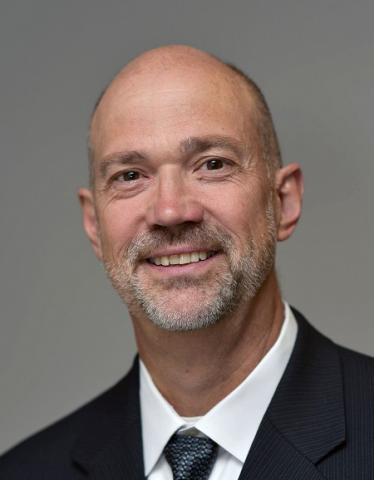
Charles A. "Gus" Potter
It is a pleasure and an honor to announce Charles A. "Gus" Potter as the recipient of the 2017 McAdams Award.
This award was established in 1989 and is presented annually by the American Board of Health Physics (ABHP) and the American Academy of Health Physics to honor a certified health physicist who has made significant contributions toward the advancement of professionalism in health physics and to the certification process.
Gus grew up in Bridgewater, New Jersey. He received his undergraduate degree in health physics from Trenton State College in 1986 and his graduate degrees in radiological sciences and protection from the University of Massachusetts Lowell in 1992 and 2000. He has over 25 years of experience at Sandia National Laboratories and is globally recognized as an expert in the fields of internal dosimetry, risk assessment, and radiation effects modeling.
Gus earned this award for three reasons. First, his technical achievements span several different areas in health physics. He is a globally recognized expert in internal dosimetry. To support this statement, I offer the fact that he is the only person in the history of the Health Physics Journal to be the sole author of an entire monthly edition! The topic of the edition was internal dosimetry applications of International Commission on Radiological Protection models.
Second, he has done all of his health physics work in service to our country. He volunteers on a national-level nuclear crisis action team. This prestigious team has only the best scientists, engineers, technicians to serve and support government and military customers. He also represents the U.S. National Nuclear Security Administration at the International Atomic Energy Agency as an expert on radioactive materials and malicious use of these materials.
Last, Gus is a model leader of the Health Physics Society (HPS) and the ABHP. He has held many positions in the Society and on the board, including leading both certification exam panels and chairing the ABHP. He has served the ABHP for more than 10 years. For the HPS, he has offered short courses, helped as a session chair during meetings, and served on the Membership Committee. He is also an HPS fellow.
At Sandia National Laboratories, Gus is a "Distinguished Member of Staff"—a position held by less than 5% of the professional staff at the labs!
Gus is a devoted father to a son and a daughter and a wonderful husband to another outstanding health physicist, Michelle Potter.
Gus, congratulations on your award and thank you again for supporting the certification process, the HPS, and the ABHP.
William Rhodes, Vice-Chair ABHP
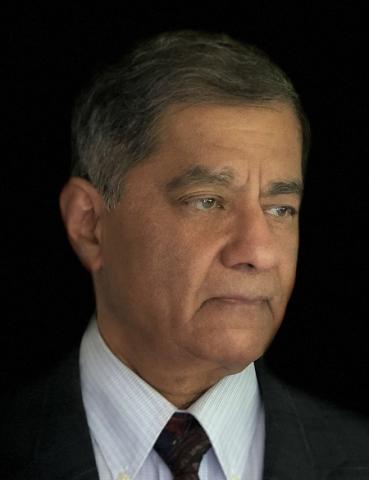
Govind Rao
It is a pleasure and honor to announce Govind R. Rao as the recipient of the 2018 McAdams Award. The award was established in 1989 and is presented annually by the American Board of Health Physics (ABHP) and the American Academy of Health Physics (AAHP) to honor a certified health physicist who has made significant contributions toward the advancement of professionalism in health physics and to the certification process.
Govind received his undergraduate degree in physics and math from University of Poona in India in 1966 and two masters degrees in physics from the Indian Institute of Technology in 1968 and the University of Pittsburgh in 1969. He also received his PhD in nuclear physics from the University of Pittsburgh in 1974.
Govind has over 40 years of experience in health physics and has authored/coauthored 46 publications/presentations. His roles and experience have been diverse, ranging from a radiation safety officer position at the U.S. Testing Company in Richland, Washington, to managing the dosimetry programs at the Testing Company and at Oak Ridge National Laboratory (ORNL). Since 1988, he has held various leadership positions responsible for the different dosimetry programs at ORNL. In 2002, he took on the leadership role responsible for the entire Dosimetry Services Group (internal and external dosimetry program) at ORNL.
Govind is a model leader of the ABHP. Since becoming certified in 1990, Govind has dedicated much of his time to further professionalism in the field by holding several positions on the board. Govind served on the ABHP Part 2 Panel of Examiners from 1999 through 2008, and he chaired the panel in 2006. After that, Govind served for five years on the ABHP, serving as its chair in 2013. While deserving of a rest after 14 years of continuous service, Govind then moved to the Part 1 Panel in 2014 where he has served to this day.
Govind exemplifies sustained, dedicated, and outstanding service to the ABHP that symbolizes the McAdams Award. Govind, congratulations on your award and thank you again for supporting the certification process, the Health Physics Society, and the ABHP.
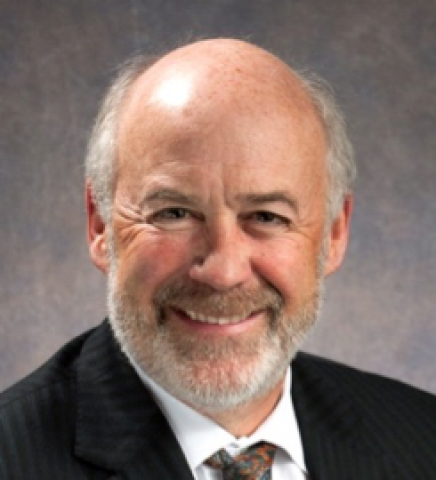
William G. Rhodes III
It is an honor and privilege to announce William (Bill) G. Rhodes III as the 2019 McAdams award winner. The award was established in 1989 and is presented annually by the ABHP and AAHP to honor a certified health physicist who has made a significant contribution toward the advancement of professionalism in health physics and to the certification process.
Bill’s contributions to the ABHP have gone relatively unnoticed by many members of the AAHP. He initiated the issuance of the ABHP into the 21st century by getting the application process for the CHP exam, Part I and Part II into an electronic format. A lot of people do not know that the previous method of FedEx’ing these applications across the nation to be individually reviewed was a monumental task and a dangerous one with the original transcripts or the entire package potentially being lost (copies were made). The Part II applications resulted in a very large bundle of paperwork being shipped. Now both of these are done electronically, saving significant dollars in shipping and handling. Also, if something is missing the reviewer can enter it into the applicants file, which is sent directly to the applicant so the needed attention can be addressed. The application review process by the ABHP Board members is now much more efficient since the reviews can begin as soon as the applications are completed in the database.
Bill also led the effort to make the transition from paper exams to electronic format for the Part I exam. This allowed a lot more flexibility for the candidates because the exam could be taken at certified testing sites across the nation, and internationally and over the range of a week instead of one select date and time. Also, the electronic format for the Part 1 exam allows for more security and control of the results since no paper is being sent to or collected at numerous test sites to be sent back to the ABHP.
Bill received his undergraduate degree in Physics and Biology from Wittenberg University in Springfield Ohio, and his graduate degree in Radiological Sciences and Protection from the University of Massachusetts Lowell. He has nearly 40 years of experience in radiation protection, nuclear security, and emergency response.
He started his career at M.D. Anderson Hospital and Tumor Institute after finishing his undergraduate degree. After two years, Bill started his graduate studies at UMass Lowell and completed his thesis with Dr. Kenneth W. Skrable. He then worked for the General Electric Company at Knolls Atomic Laboratory, Arthur D. Little Inc., the University of Rochester and Sandia National Laboratories. He has been assigned to diverse staff and senior leadership roles at these institutions. Bill has worked extensively with the international community including participating in many nuclear security consultancy meetings with the International Atomic Energy Agency. He has earned multiple employee recognition awards and letters of recognition from Sandia and the National Nuclear Security Administration including awards for the response to 9/11, preparing for the Greek Olympics, and the response to the Fukushima accident. He was also presented with the 2016 UMass Lowell Distinguished Alumni Award for the Kennedy College of Sciences. He is currently a United States Senate Fellow on the Senate Homeland Security and Governmental Affairs Committee with Senator Ron Johnson from Wisconsin as Chairman of that Committee.
Bill has been a member of the Health Physics Society since 1981. He passed the American Board of Health Physics (ABHP) Part 1 exam in 1981, and was certified in 1988. He has served two terms on the ABHP Part 2 Exam Panel and two terms on the ABHP Part 1 Panel including serving as its Vice Chair and Chair. Bill has moved on to serving as member of the ABHP where he serves to this day, his roles on the board include Vice Chair and Chair.
He is the proud father of three sons, and he has one granddaughter. In his spare time, he served two terms with the volunteer Board of the Children’s Grief Center of New Mexico, and he currently serves on the Radiological Sciences Advisory Board, the Kennedy School of Sciences Advisory Board and the Chancellor’s Advisory Panel at UMass Lowell.
Today, the American Academy of Health Physics and American Board of Health Physics are proud to honor and recognize Bill Rhodes for his many years of dedication and sustained service to the health physics profession and the certification process. Bill exemplifies himself with his boundless energy and passion to improve the ABHP and symbolizes the McAdams Award
I take great pride and privilege in presenting the 2019 William A. McAdams Outstanding Service Award to my colleague Bill Rhodes.
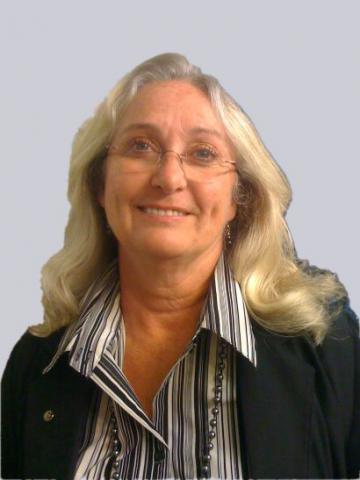
Kathleen (Kathy) Dinnel-Jones
Kathleen (Kathy) Dinnel-Jones is the recipient of the 2020 William A. McAdams Outstanding Service Award. This award is presented annually by the American Board of Health Physics (ABHP) to honor a certified health physicist who has made a significant contribution toward the professionalism in health physics and to the certification process. In conferring this award, the ABHP Selection Committee especially recognizes Kathy’s commitment to the missions and objectives of the ABHP. She has served as a member of the ABHP Part II Panel of Examiners for nine years, including service as Vice Chair and Chair in 2016 and 2017, respectively. When she was Chair of the Part II Panel of Examiners, Kathy initiated the reengineering effort for the Part II question bank, an electronic database of questions with their solutions and performance data. She strived to maintain a consistent quality and clarity of the questions in order to make re-using the questions practicable. She continues to actively engage in this effort.
Kathy currently is a board member of the ABHP and will assume Secretary of the ABHP in 2021. She was a member of the American Academy of Health Physics’ Nominating Committee (2004-2007) and Title Protection and Professional Recognition Committee (2007-2012) as well as Health Physics Society’s (HPS’) Program Committee (1996-2001) and Venues Committee (2001-2004). She is also a proud member of the Northern California Chapter and the San Diego Chapter of the HPS and has served various leadership roles of the Chapters.
Kathy received her bachelor’s degree in zoology and master’s degree in radiological health physics, both from San Diego State University. Her career started at the Pacific Gas & Electric Company (PG&E) as a health physicist where she gained progressive professional experience in both technical and supervisory areas. During her 11-year tenure at the PG&E, she also developed and implemented both radiation protection audit programs for nuclear facilities and a technical-based non-radiological audit program for hazardous materials.
For the next seven years, Kathy was with the Lawrence Berkeley National Laboratory. She was responsible for managing the radiation dosimetry unit, coordinating ALARA performance reviews, and most notably consolidating and managing the bioassay, environmental chemistry, dosimetry, and radiation instrument calibration programs into a single service-oriented group.
In 1999, Kathy began her new post with the Lawrence Livermore National Laboratory and was initially certified in the practice of health physics, In addition to being responsible for maintaining radiation safety and health program, she provided technical guidance on hazard analysis and assessment, emergency planning and response programs, and US Department of Energy’s (DOE’s) Laboratory Accreditation Program assessments at various DOE facilities.
In 2008, Kathy started working for the University of California, Berkeley, as lead health physicist. In this senior advisory capacity, she was in charge of implementing a comprehensive radiological control program under a broad scope radioactive material license.
On behalf of the ABHP, it is my privilege and pleasure to recognize my colleague, Kathleen (Kathy) Dinnel-Jones, for her many years of dedication and sustained service to the health physics profession and the certification process. Congratulations, Kathy, on receiving the 2020 William A. McAdams Outstanding Service Award!
Wei-Hsung Wang, Vice Chair ABHP
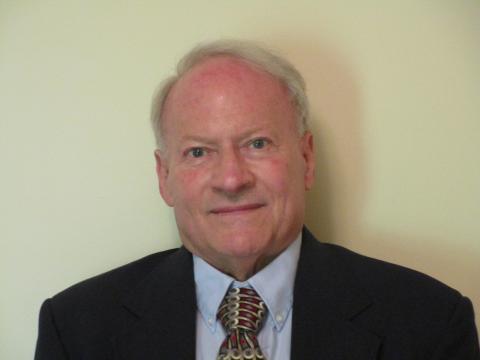
Wayne Gaul
With great honor, Wayne C. Gaul is awarded the 2021 William A. McAdams Outstanding Service Award, presented annually by the American Board of Health Physics (ABHP). Since 1989, when it was first established, coinciding with the thirteenth year of the ABHP, the McAdams award honors a Certified Health Physicist who has made significant contributions toward the advancement of professionalism in health physics and to the overall certification process.
Wayne has been instrumental to the development and conduct of the certification exam for many years. He started in 2006, as an active member of the Part II panel. He continued until 2012 when he became the chair of the Part II Panel and oversaw the 2012 exam. He took some time off and was elected to the ABHP Board in 2015, so he could still grade exams. In 2019 he was selected to the Vice Chairmanship of the ABHP, and then became the Chair in 2020. Many of us remember working with him over the last eight years in some capacity related to the development of Part II exam questions and stock solutions, particularly in his area of expertise, the nuclear fuel cycle.
In the spirit of William McAdams, particularly emphasized during the 2020 exam year when we found ourselves in the midst of a global pandemic from the spread of SARS-COV2, Wayne was deliberate and decisive in his actions and leadership in not only assembling the certification exam, but also navigating the myriad of complications brought about by the necessity of changing the meeting of the Board, execution of the exam, and grading of the exam, from in person to over the internet, all the while maintaining composure as everyone adapted to the complete change in human behavior from working remotely. The ABHP was well served by Wayne’s patience and persistence in 2020, as Chair. Concurrent with his management of the overall certification process Wayne also managed the prodigious effort needed for migration of the Part II question bank to a new system managed by Prolydian. He has left an indelible mark on the ABHP and the Part II panel.
From the University of Kansas, Wayne received three diplomas: B.A. in Biology and Biochemistry; M.B.A. in Business Administration; and an M.S. in Radiation Biophysics. From the University of South Carolina, he was awarded his Ph.D. in Environmental Health Science, specializing in Industrial Hygiene.
Wayne has over 40 years of experience in the practice of health physics, starting his career with Canberra Industries as a project manager for the development and deployment of radiation detection systems for alpha/beta/gamma-ray spectrometry. He soon went back to the University of Kansas calibrating x-ray machines and performing dose assessments at the University Medical Center, Department of Radiation Therapy. Next, he moved to work at the Idaho National Laboratory developing radiation and nuclear safety analysis reports for the Idaho Chemical Processing Plant, as it was known at that time, a facility where spent fuel was dissolved, and the nuclear fuel, recycled. He then went to the Nuclear Power arena at Wolf Creek Nuclear Generating station. This experience would later become invaluable during his work for Chem-Nuclear Systems, and Savannah River National Laboratory. For the last twenty years of his career Wayne has been Senior Program Manager at Tidewater, Inc., performing technical evaluations related to radiological, industrial safety, and hazardous material projects. He has supplied health physics, waste management, industrial hygiene, and occupational safety assistance at decommissioning projects for Los Alamos National Laboratory, Brookhaven National Laboratory, the Savannah River Site, National Aeronautics and Space Administration facilities, Knolls Atomic Power Laboratory, Idaho National Laboratories and Argonne National Laboratory, an impressive slate of nuclear facilities. He co-authored ANSI N13.12, January 2000, “Surface and Volumetric Radioactivity Guides for Materials, Equipment and Facilities to Be Released for Uncontrolled Use.” Wayne has also actively shared his knowledge, making numerous technical presentations at national meetings, and serving as an instructor for multiple continuing education sessions.
Wayne, congratulations on receiving the distinguished McAdams award for 2021. A true gentleman whose leadership exemplifies the merits of and dedication to the certification process, with long-lasting impacts to the practice of health physics.
Jeffrey A. Chapman
ABHP Part II Panel, Past Chair (2021)
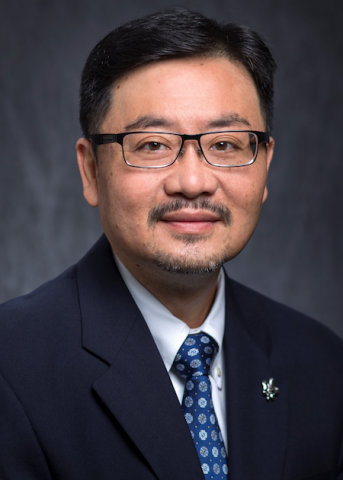
Wei-Hsung Wang
Dr. Wei-Hsung Wang is the recipient of the 2022 William A. McAdams Outstanding Service Award. This award is presented annually by the American Board of Health Physics (ABHP) to honor a certified health physicist who has made significant contributions toward professionalism in health physics and to the certification process. In conferring this award, the ABHP Selection Committee especially recognizes Dr. Wang’s commitment to the missions and objectives of the ABHP. He served as a member of the Part II Panel of Examiners from 2008 to 2018, including serving as Vice Chair in 2015 and Chair in 2016, and the AAHP Professional Development Committee from 2009 to 2012. He also chaired the HPS Academic Education Committee (2018-2021), served as Co-Academic Dean of the 2014 HPS Professional Development School on Radiation Safety in Medicine, and was President of the Deep South Chapter HPS for four years. In addition, he has served on the Certified Laser Safety Officer Review Board. Currently, he is a member of the ABHP through 2023, serving as Vice Chair in 2020 and Chair in 2021.
Dr. Wang is a professor at the Center for Energy Studies at Louisiana State University (LSU), an adjunct professor in the Department of Physics & Astronomy and the Department of Environmental Sciences at LSU, and a clinical professor of radiology at LSU Health Sciences Center New Orleans. He was a faculty senator at LSU from 2019 to 2022. He teaches Radiation Protection and Exposure Evaluation, Environmental Radiological Evaluation and Remediation, and Nuclear Facility Safety courses and has received Commendation for Excellence in Teaching five times at LSU. He has chaired 11 graduate committees and served on another 22 graduate committees. He is also Director of the Radiation Safety Office at LSU and administers a comprehensive radiological control program under a broad scope radioactive material license.
Dr. Wang received his B.S. degree in geology from National Taiwan University, M.S. degree in environmental health engineering from Northwestern University, and Ph.D. degree in health physics from Purdue University under the mentorship of Dr. Herman Cember and Dr. Paul L. Ziemer. He is certified by the American Board of Health Physics (ABHP), the Board of Certified Safety Professionals, and the Board of Laser Safety. He is a Fellow of the Health Physics Society (HPS) and was the Herman Cember Memorial Lecturer at the 2013 American Industrial Hygiene Conference and Exhibition in Montreal, Canada.
Dr. Wang’s research interests center on the development of feasible solutions to practical radiological protection, radiation detection, and environmental impact issues, through the application of a diverse background in bionucleonics, environmental health engineering, industrial hygiene, non-ionizing radiation, radiation instrumentation, and radiochemistry. The majority of his work has emphasized operational radiation safety, radiation detection instrumentation, air monitoring methodology, radioactive waste management, gamma-ray spectroscopy, radiation dosimetry, environmental radiation, and radiological emergency response planning and preparedness. He has contributed three book chapters and authored/co-authored more than 60 peer-reviewed publications, conference proceedings/presentations, and abstracts. He also holds a U.S. patent on a real-time video radiation exposure monitoring system. As a principal investigator/co-investigator, more than two million dollars of funds from grant proposals and contracts have been awarded to his collaborative research and teaching efforts in health physics. In addition, he has served as a reviewer for Environmental Health Insights, Health Physics, Medical Physics, Nuclear Instruments and Methods in Physics Research, Nuclear Science and Techniques, and Progress in Nuclear Energy as well as the National Institute for Occupational Safety and Health SWCOEH Pilot Projects Research Training Program and the U.S. Civilian Research and Development Foundation.
Dr. Wang is a charter member of the U.S. Environmental Protection Agency (EPA) Science Advisory Board (SAB) and its Radiation Advisory Committee (RAC). He also served on the EPA SAB RAC augmented MARSSIM (revision 2) Review Panel. He was a technical advisor to the Secretary of the Louisiana Department of Health to provide the Secretary with scientific advice on planning, preparedness, and response to radiological events. Dr. Wang was selected to participate in the 2016 Nuclear Tour de France (organized by Française de l'American Nuclear Society and Société Française d'Energie Nucléaire and sponsored by ANDRA, AREVA, Électricité de France, and Commissariat à l'Energie Atomique) to promote and develop exchanges about the status and knowledge of nuclear development and achievements in France and in the U.S. in different technical fields. After the Fukushima nuclear incident in Japan, he served as a radiological expert on the U.S. National Oceanic and Atmospheric Administration Radiological Ideas Workshop. He was also an invited panelist on the U.S. Nuclear Regulatory Commission (NRC) Radiation Protection Standards Workshop to discuss the potential changes to the NRC’s radiation protection regulations and guidance in light of recommendations in ICRP Publication 103.
On behalf of the ABHP, it is my privilege to recognize my colleague, Dr. Wei-Hsung Wang, for his many years of dedication and sustained service to the ABHP and the health physics profession in general. Congratulations, Wei-Hsung, on receiving the 2022 William A. McAdams Outstanding Service Award.
Allen Mabry, ABHP Vice Chair
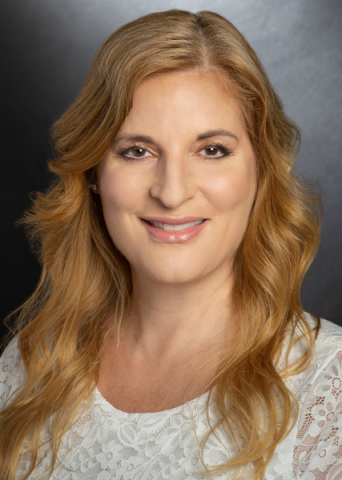
Cynthia Flannery
On behalf of the ABHP, it is my privilege and pleasure to recognize my colleague, Cindy M. Flannery, for her many years of dedication and service to the health physics profession and the certification process as the 2023 William A. McAdams Service Award Honoree. This annual award is presented by the American Board of Health Physics (ABHP) to honor a certified health physicist who has served the health physics community through outstanding and extended work on the ABHP Examination Panels, ABHP Board, AAHP Executive Committee and other AAHP committees.
Cindy received her Bachelor of Science from the University of Wisconsin-La Crosse in 1990, majoring in Nuclear Medicine Technology, her Master of Science in Health Physics from Georgetown University, Washington, D.C. in 2000, and became a Certified Health Physicist and a member of the American Academy of Health Physics in 2001.
She started her health physics career as a Senior Health Physicist (1993 – 1999) for Krueger-Gilbert Health Physics, Inc. in Baltimore, Maryland where she provided comprehensive health physics support to hospitals and facilities with NRC and Agreement State medical use licenses. While finishing her Master’s degree, she served as a Radiation Safety Officer (1999 –2000) for the FDA’s Center for Food Safety and Applied Nutrition in Washington, DC. There she maintained a broad scope NRC license and managed the radiation safety program. Next, she accepted a position as the Radiation Safety Officer (2000 – 2004) for the Defense Threat Reduction Agency in Fort Belvoir, Virginia where she managed their NRC license for the military uses of radioactive material.
Cindy is currently a Senior Health Physicist (2004 – present) at the U.S. Nuclear Regulatory Commission (NRC) in the Medical Safety and Events Assessment Branch in Rockville, Maryland. She is involved with the development and implementation of NRC policies and programs associated with 10 CFR Part 35, Medical Use of Byproduct Material.
Throughout her career, she continued to provide support and give back to the certification process through: serving on the ABHP Part I Examination as a panel member (2009 – 2016) and as the Part I Examination Chair (2014); serving on the ABHP Board (2017 – 2021) as both Vice-Chair (2018) and Board Chair (2019); and is currently serving on the AAHP Executive Committee as a Director and Parliamentarian (2023 – present).
Her dedication to furthering the advancement of the Health Physics community is also acknowledged through her memberships on various committees: Accredited Standards Committee (ASC) – N13 (Radiation Protection) member (2017 – present); “Health Physics News” bi-monthly newsletter Associate Editor (2012 – present); “Ask the Experts” feature of the Health Physics Society website Topic Editor (2012 – 2015); National Council on Radiation Protection and Measurements Council Member (2017 – 2023); and Council of Engineering & Scientific Specialty Boards ABHP Liaison (March 2020 – present). She is also a proud member of the Baltimore-Washington Chapter of the Health Physics Society (2005 – present) where she served as Executive Committee/Secretary (2007 – 2009) and a plenary member of the National Health Physics Society (1999-present).
We are very fortunate to have Cindy, a dedicated Health Physicist who continues to share her knowledge, skills, and time for the betterment of the Health Physics profession and the community.
Please join with me in congratulating Cindy on receiving the 2023 William A. McAdams Outstanding Service Award!
Kathleen Dinnel-Jones, 2023 Vice Chair ABHP
